What life was like in Soviet Central Asia (PHOTOS)
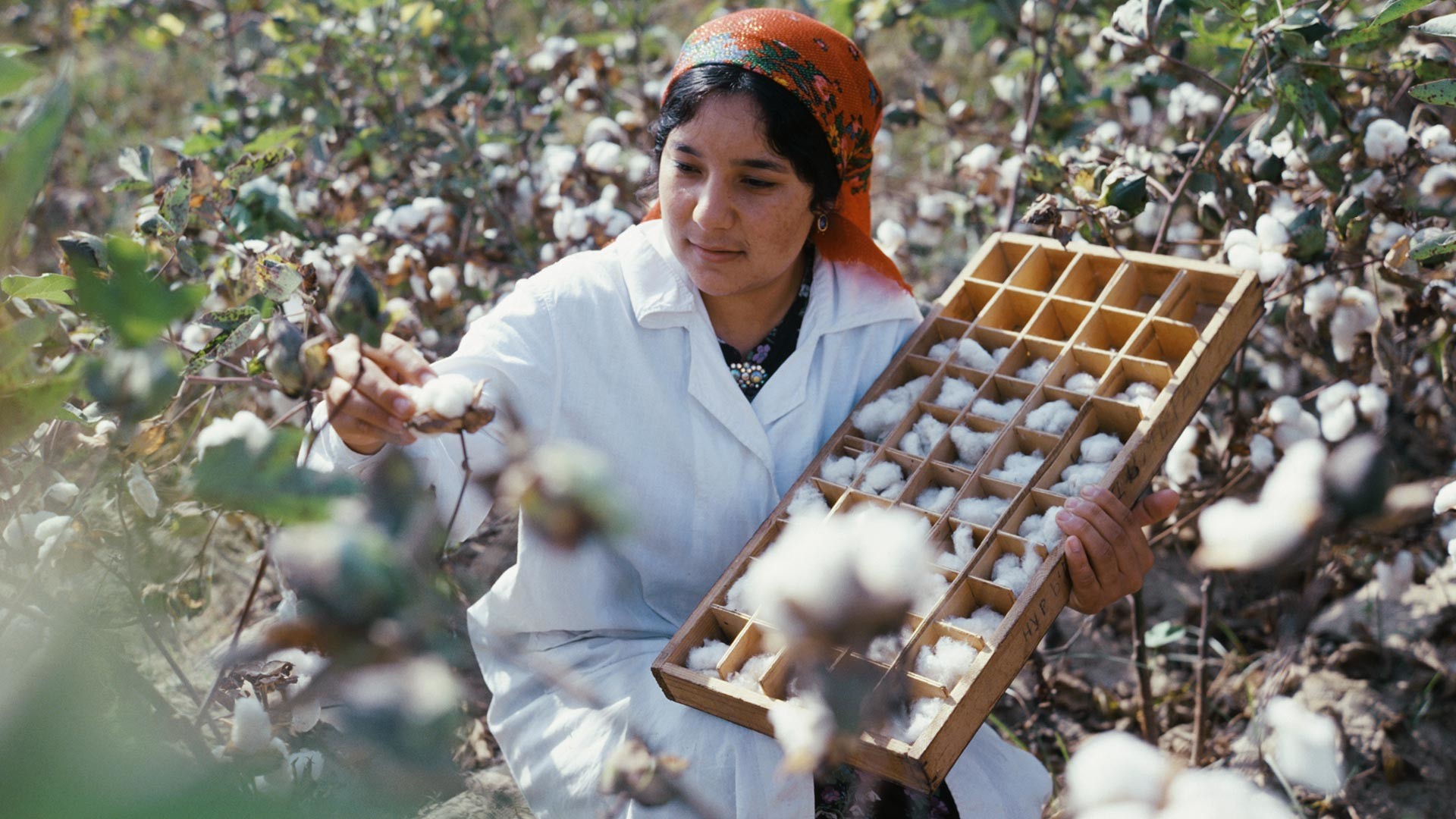
Children
One of the main tasks facing the USSR was the elimination of illiteracy, and so, new schools, including those for adults, were set up all over the country. Tuition was in Russian and in local languages. Children were taught to love the Communist Party and Lenin from an early age. Many pioneers from Central Asia were awarded with visits to both the capitals of their republics and Moscow.
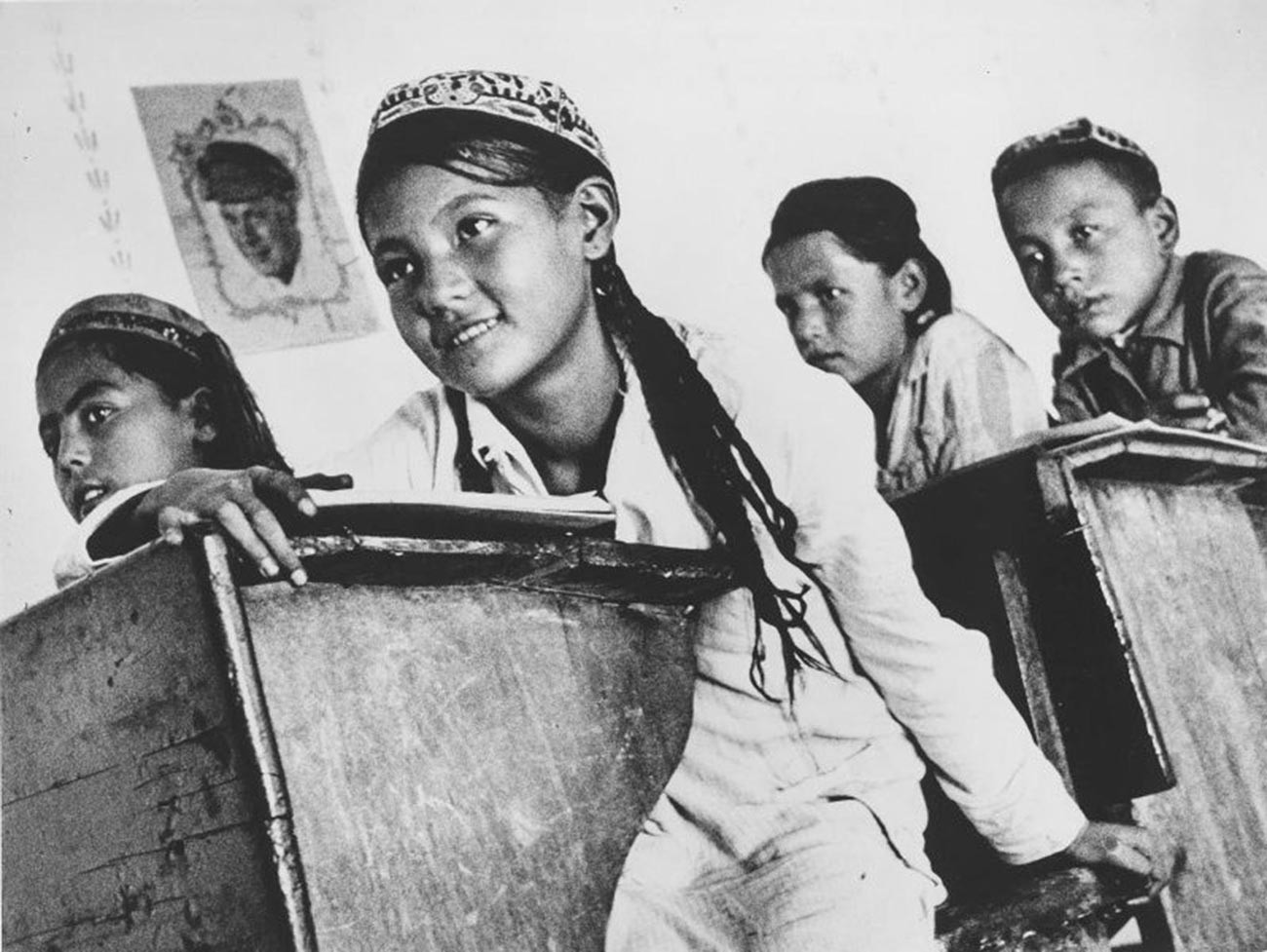
At school, Uzbek SSR; 1930s
Max Penson/МАММ/MDF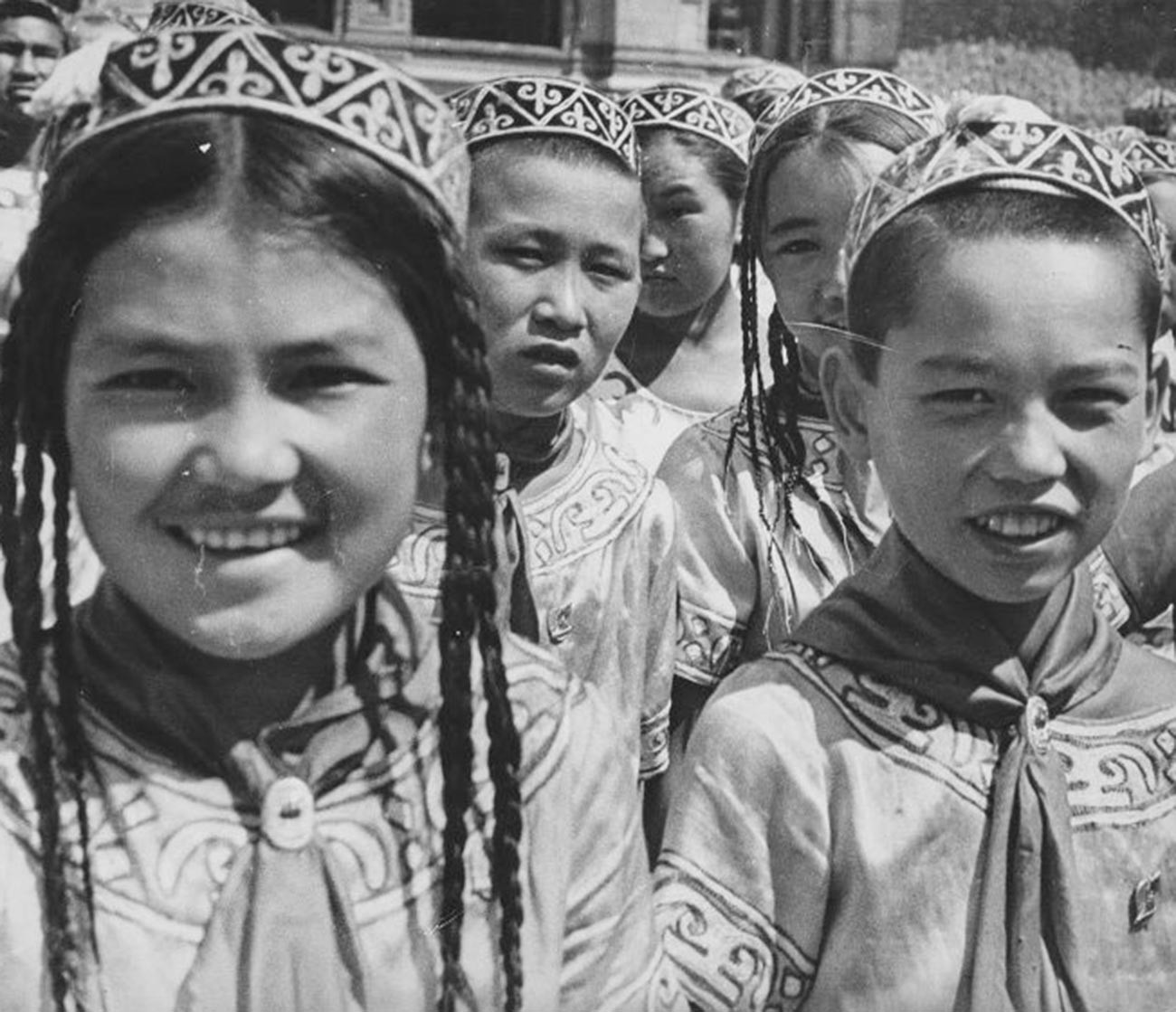
Pioneers from Kazakh Republic visit Moscow; 1935.
Emmanuil Yevzerikhin/МАММ/MDF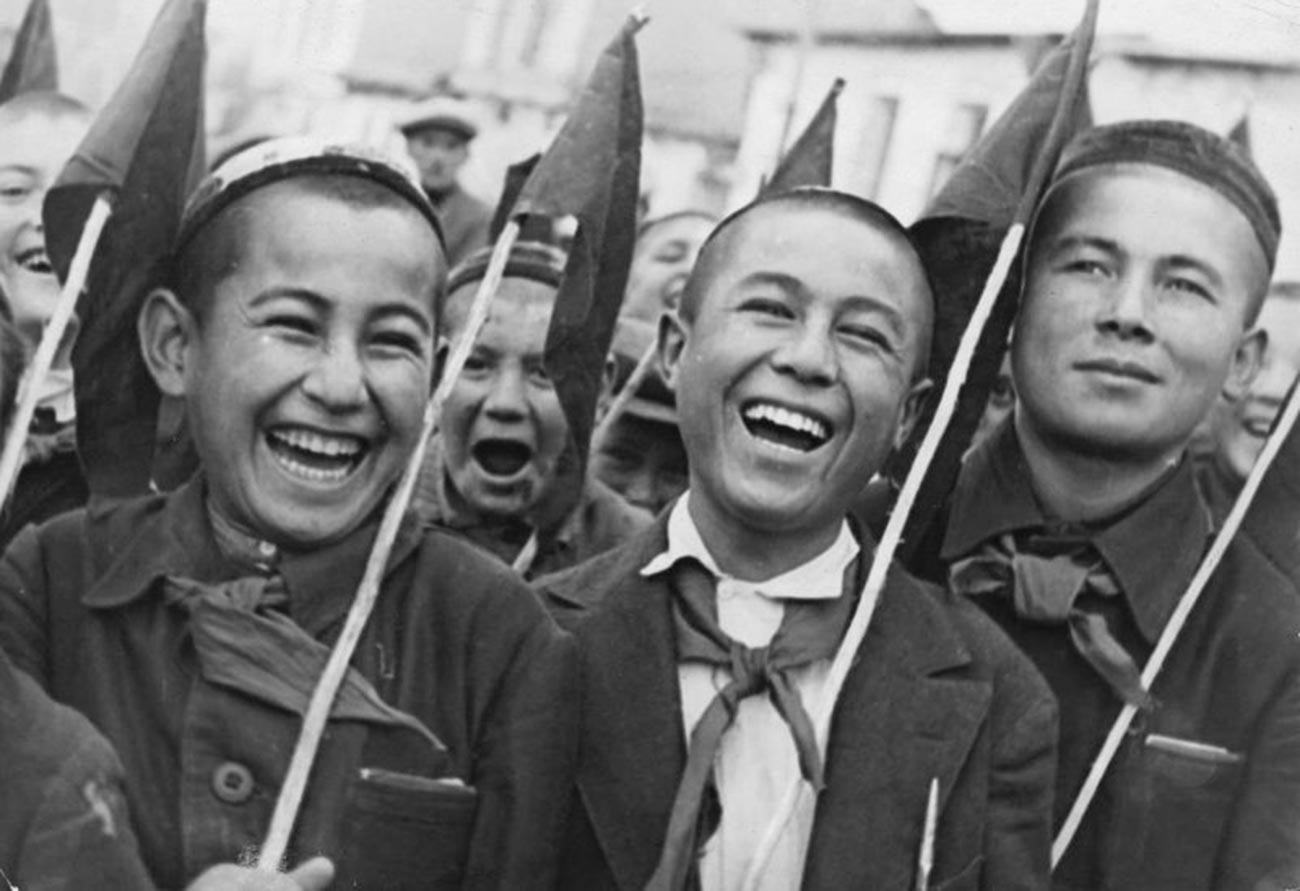
Pioneers, Uzbek SSR; 1930s.
Max Penson/МАММ/MDF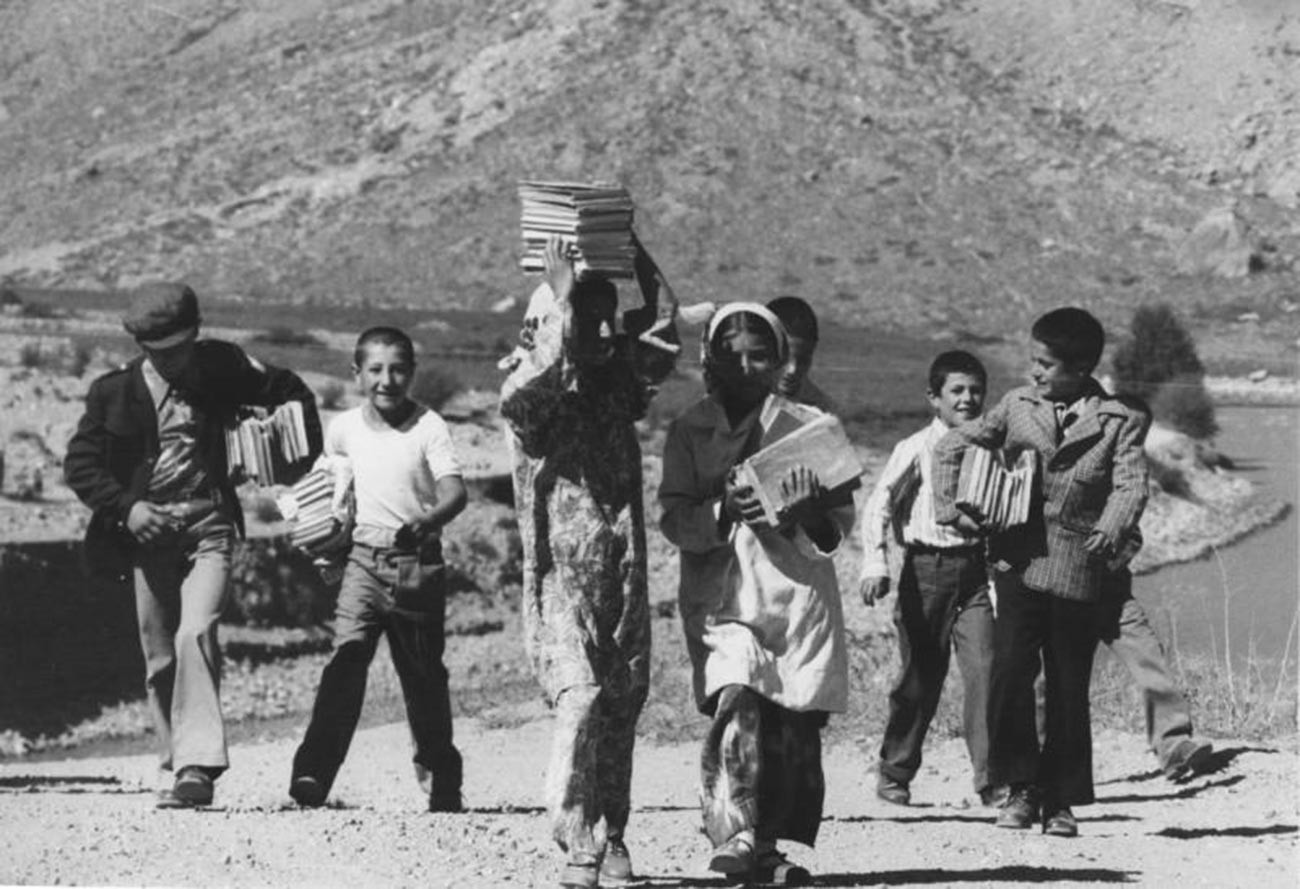
Ahead of September 1, “Day of Knowledge,” Tajik SSR; 1972.
Vsevolod Tarasevich/МАММ/MDF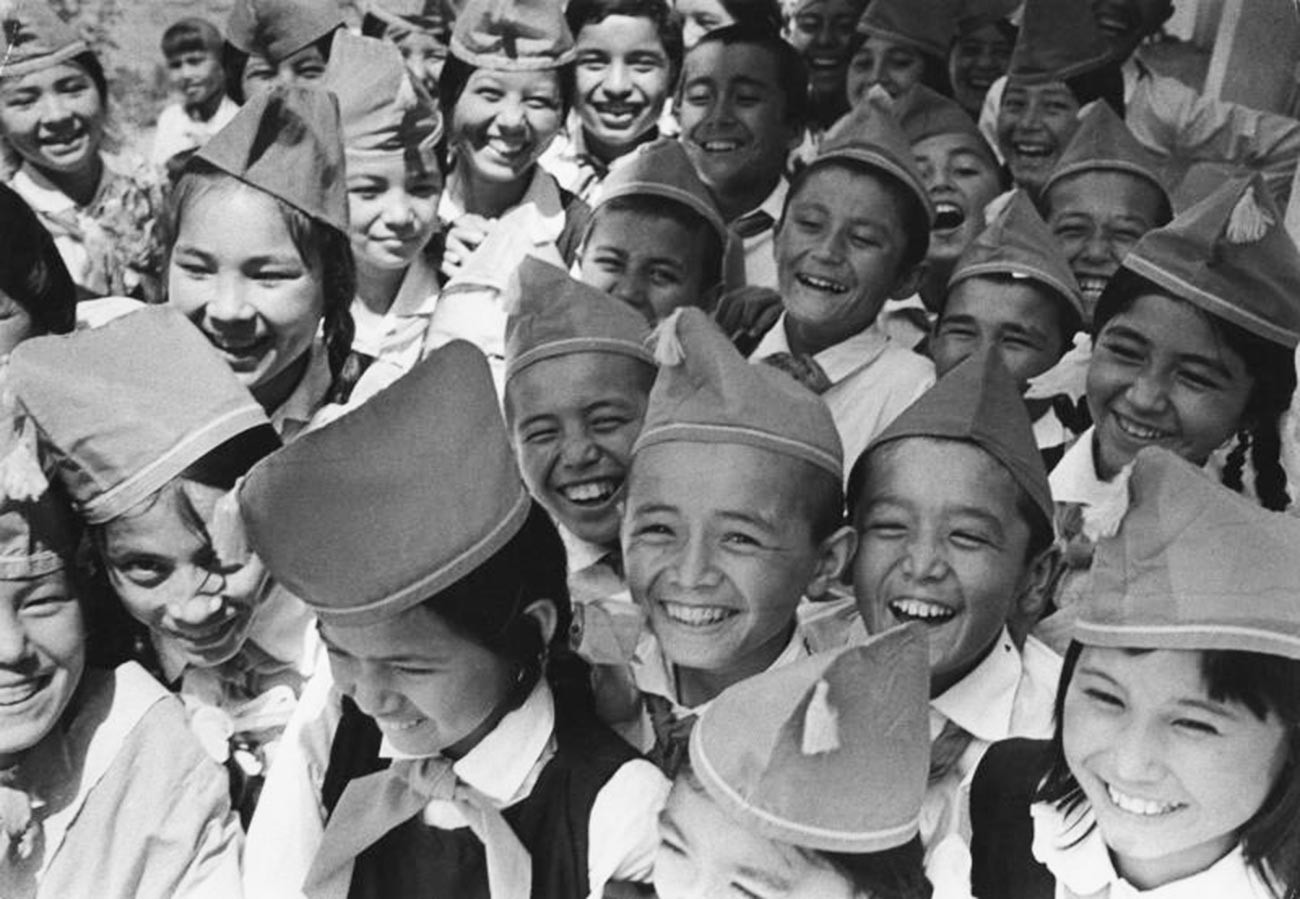
Kyrgyz pioneers; 1975-1976.
Georgy Zelma/МАММ/MDF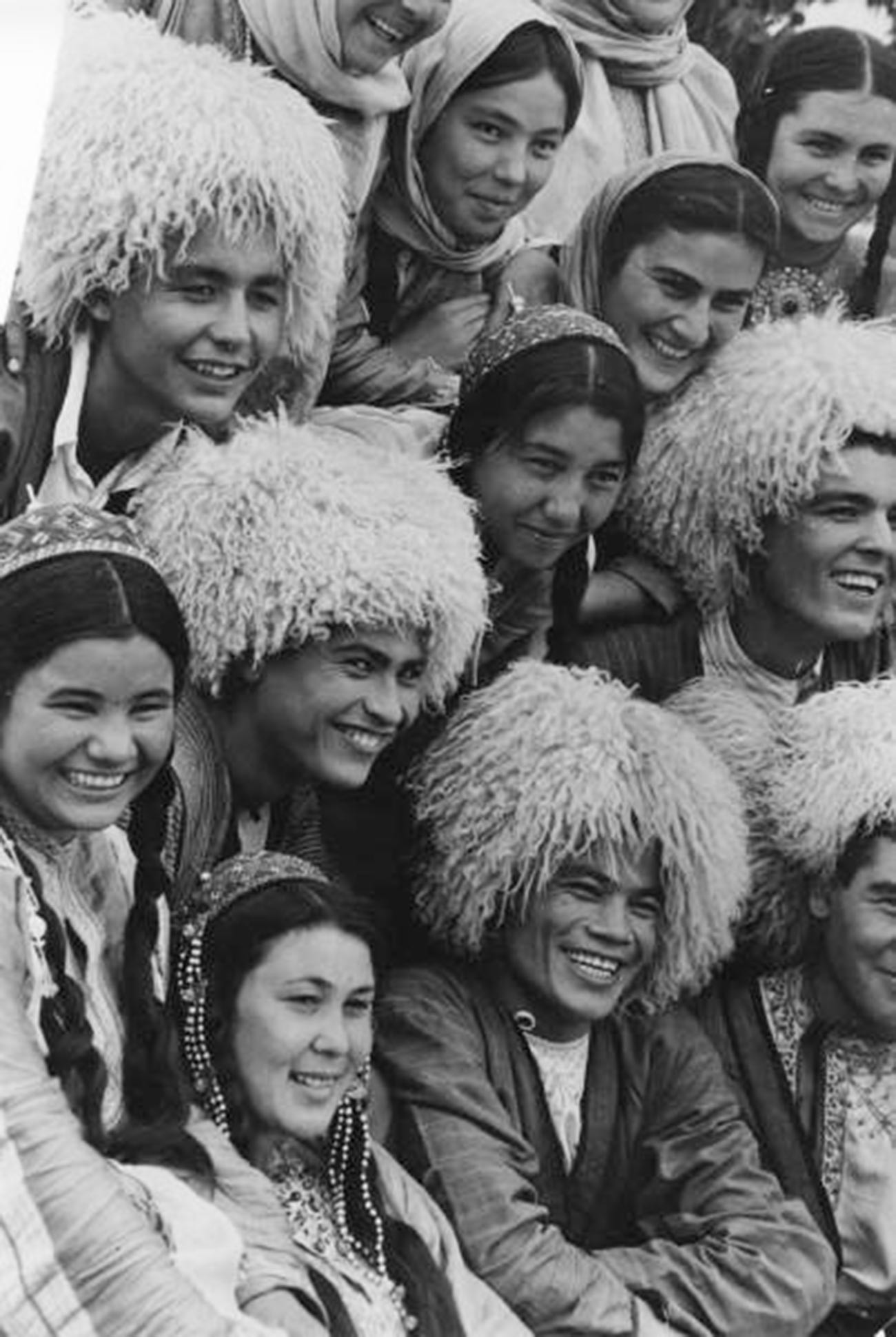
Turkmen youth; 1977.
Vsevolod TarasevichМАММ/MDF
Pioneer Day in Tajik Republic; May 19, 1972.
Vsevolod Tarasevich/МАММ/MDFCollective farmers
Collectivization, i.e. the process of merging individual peasant farms into collective farms, was carried out in the Central Asian republics. People from all over the USSR poured into the region. They ploughed virgin lands and developed agriculture.
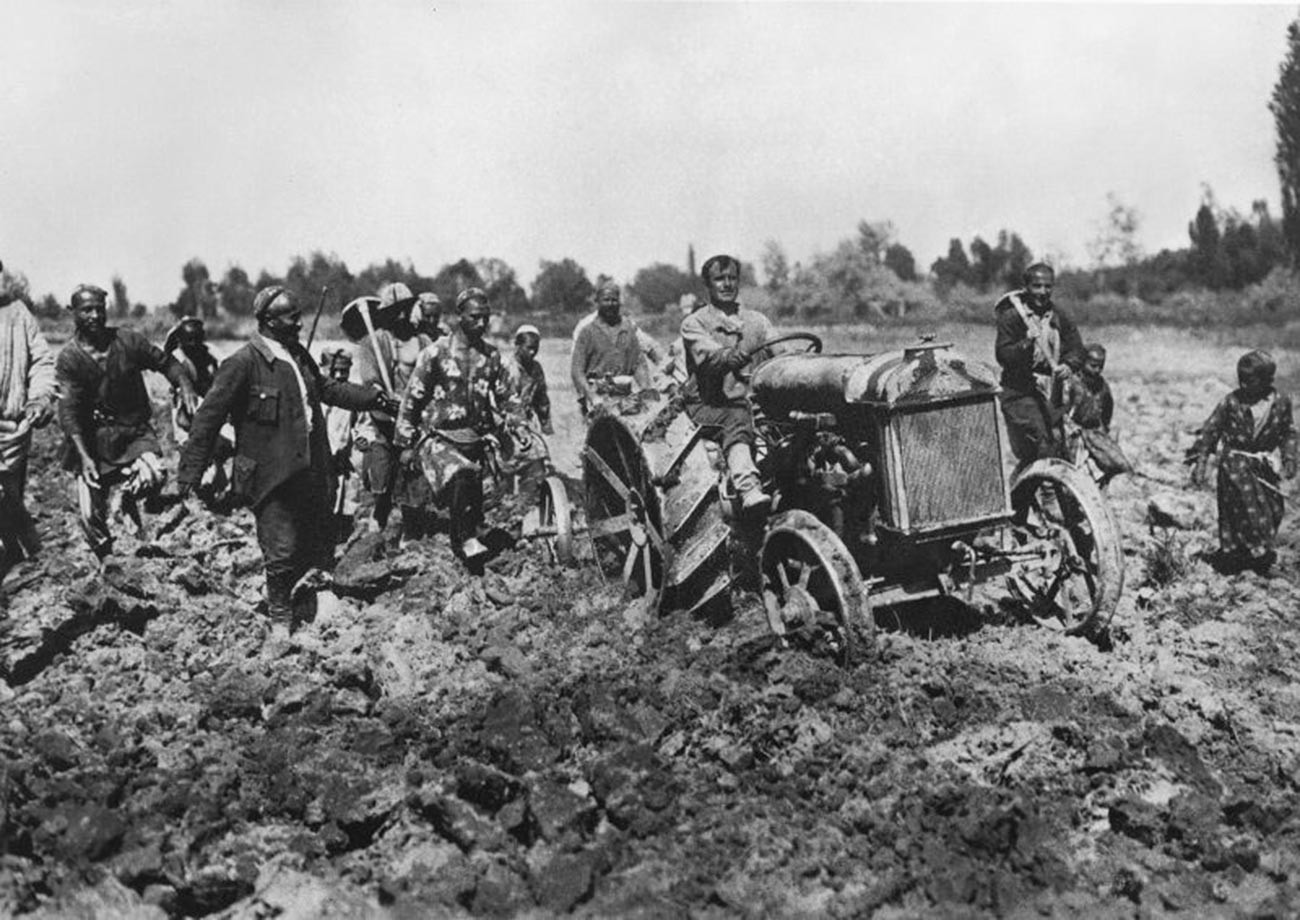
First tractor in Uzbek Republic; 1929.
Arkady Shaykhet/МАММ/MDF
Uzbek Republic. Cotton harvest; 1970s.
Boris Kudoyarov/МАММ/MDF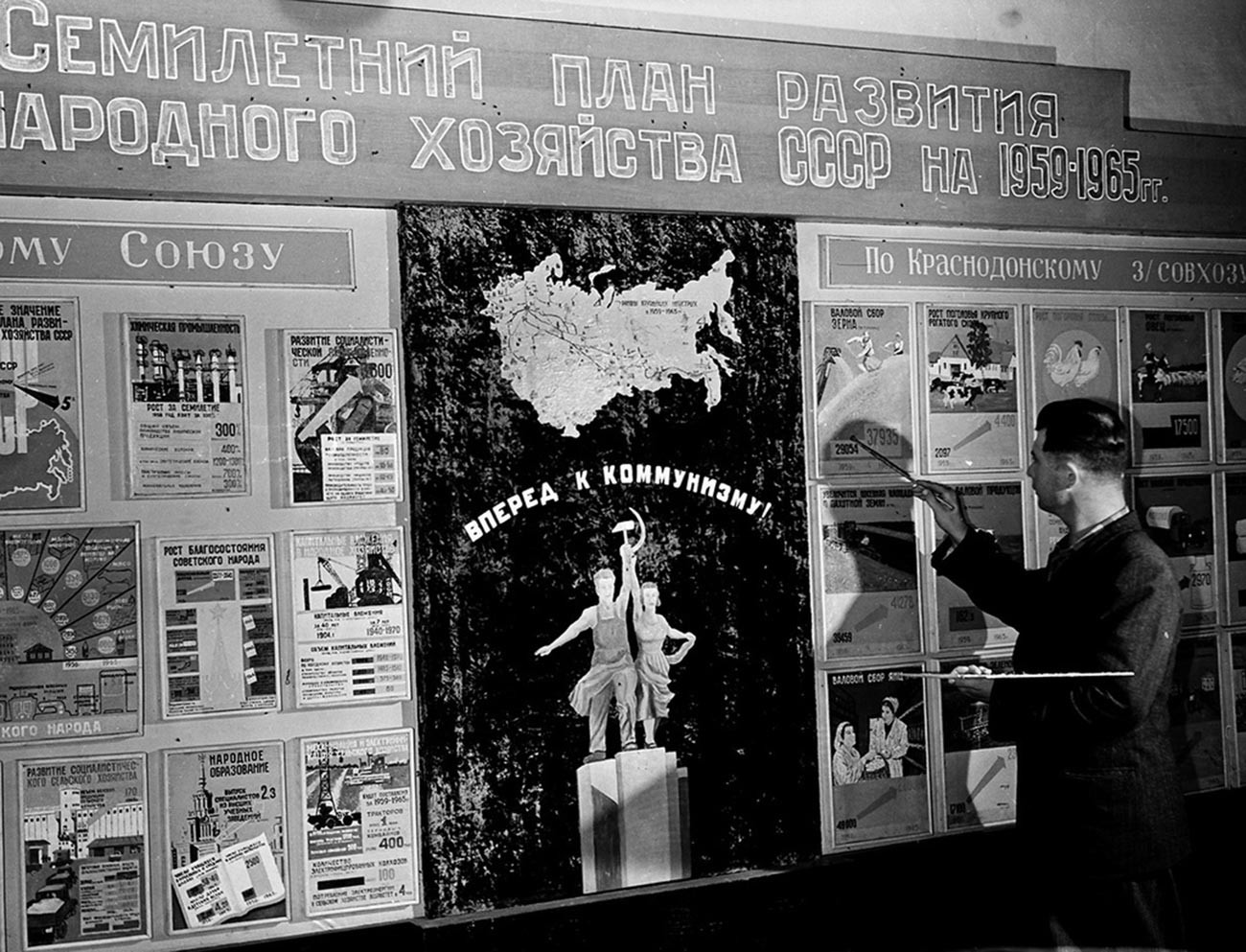
Assistant combine driver Fyodor Frolov is studying the seven-year agricultural development plan at the Krasnodonsky Sovkhoz Community Center, Kazakh Republic; 1959.
Valentin Khukhlayev/Valentin Khukhlayev’s archive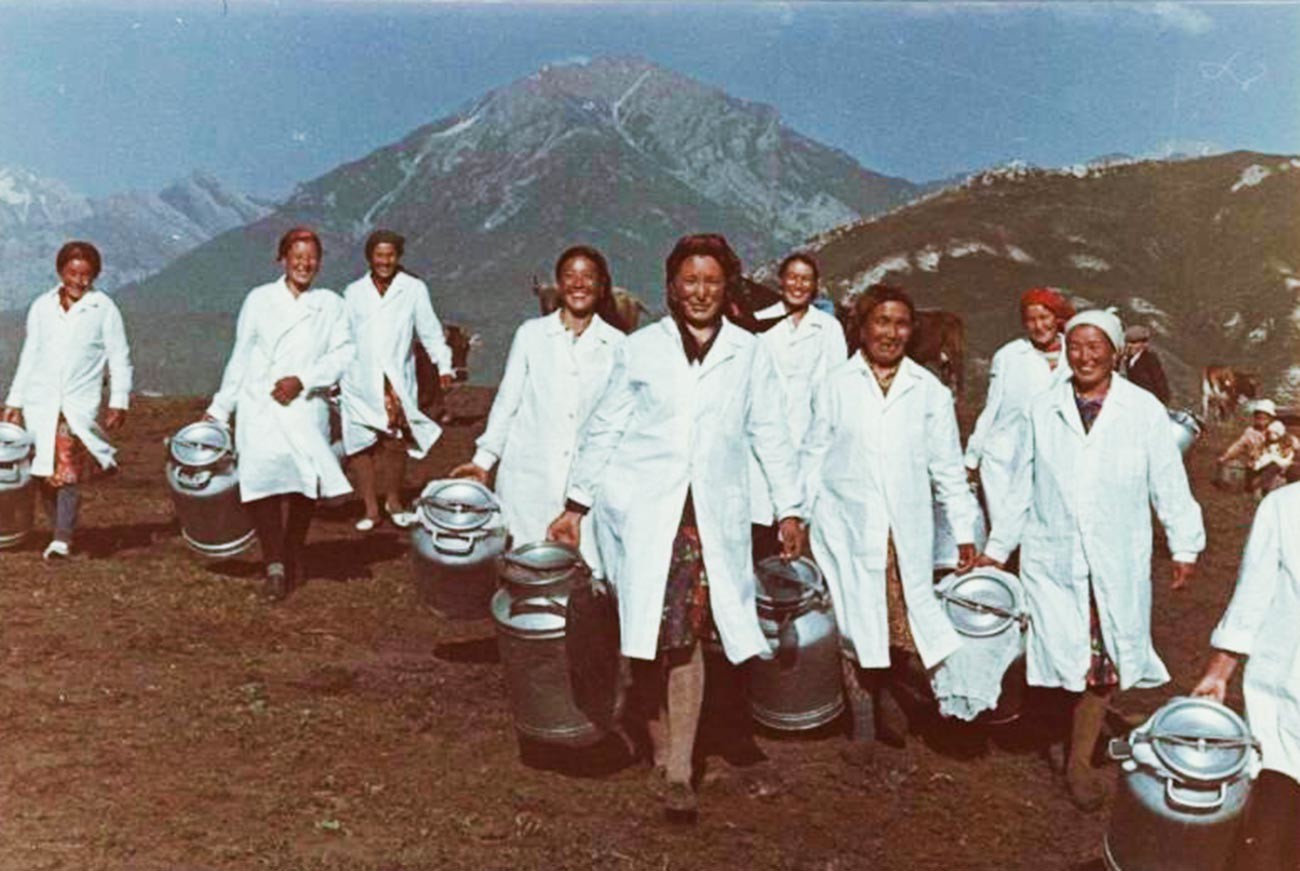
Dairymaids in Kyrgyzia; 1970s.
Dmitry Baltermants/МАММ/MDF
Grain elevator with the Soviet emblem, Kazakh SSR, Kustanay; 1959.
Valentin Khukhlayev/Valentin Khukhlayev’s archive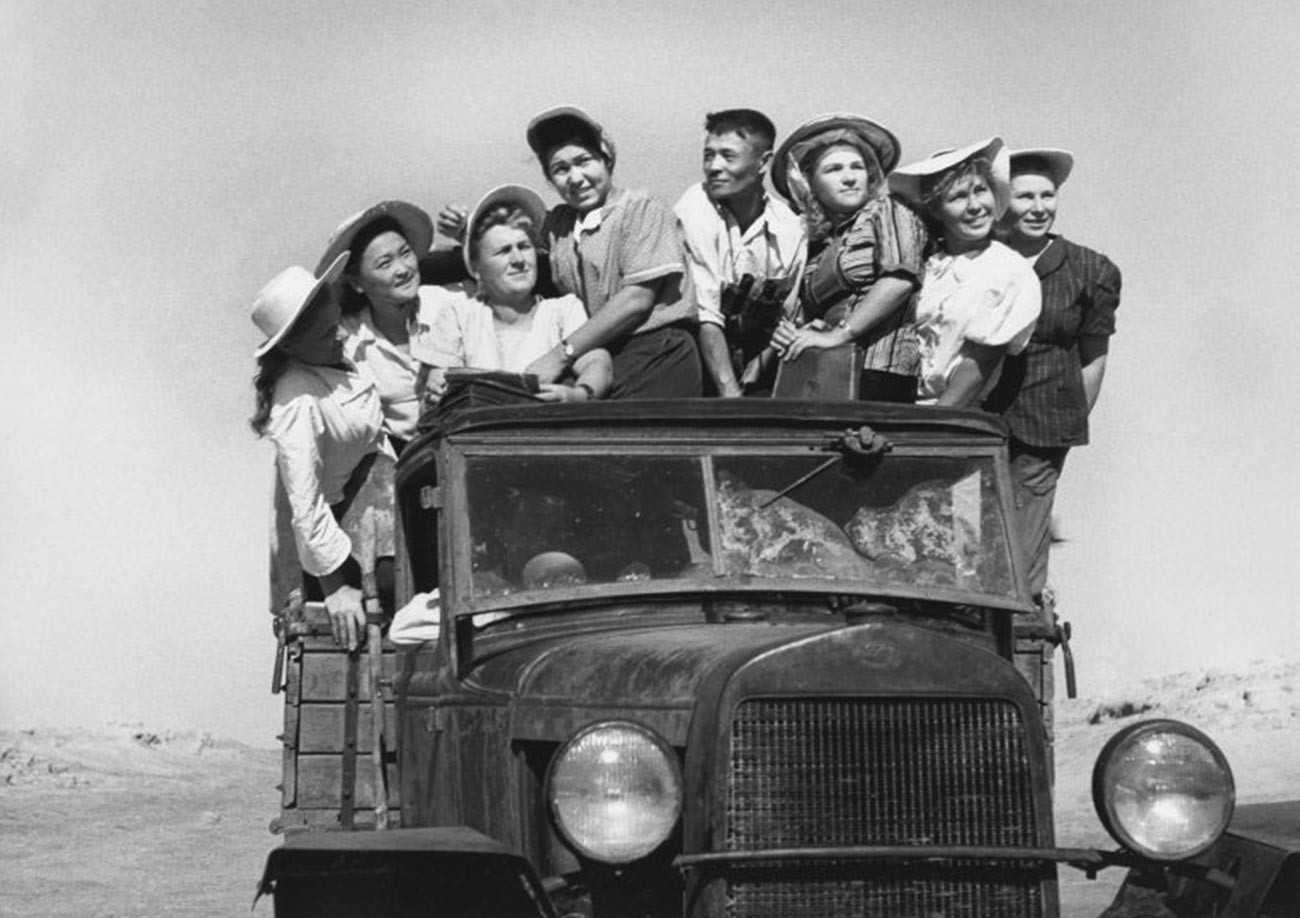
Students at the ‘virgin lands’, Kazakh SSR; 1952.
Arkady Shaykhet/МАММ/MDFWorkers
Central Asia was also the scene of major industrialization projects: building railways, factories, hydroelectric power stations and canals. Incidentally, local Stakhanovites invariably received recognition from Moscow – in the form of bonuses or feature stories about them in national papers and magazines.
READ MORE: How the USSR created ‘super-workers’
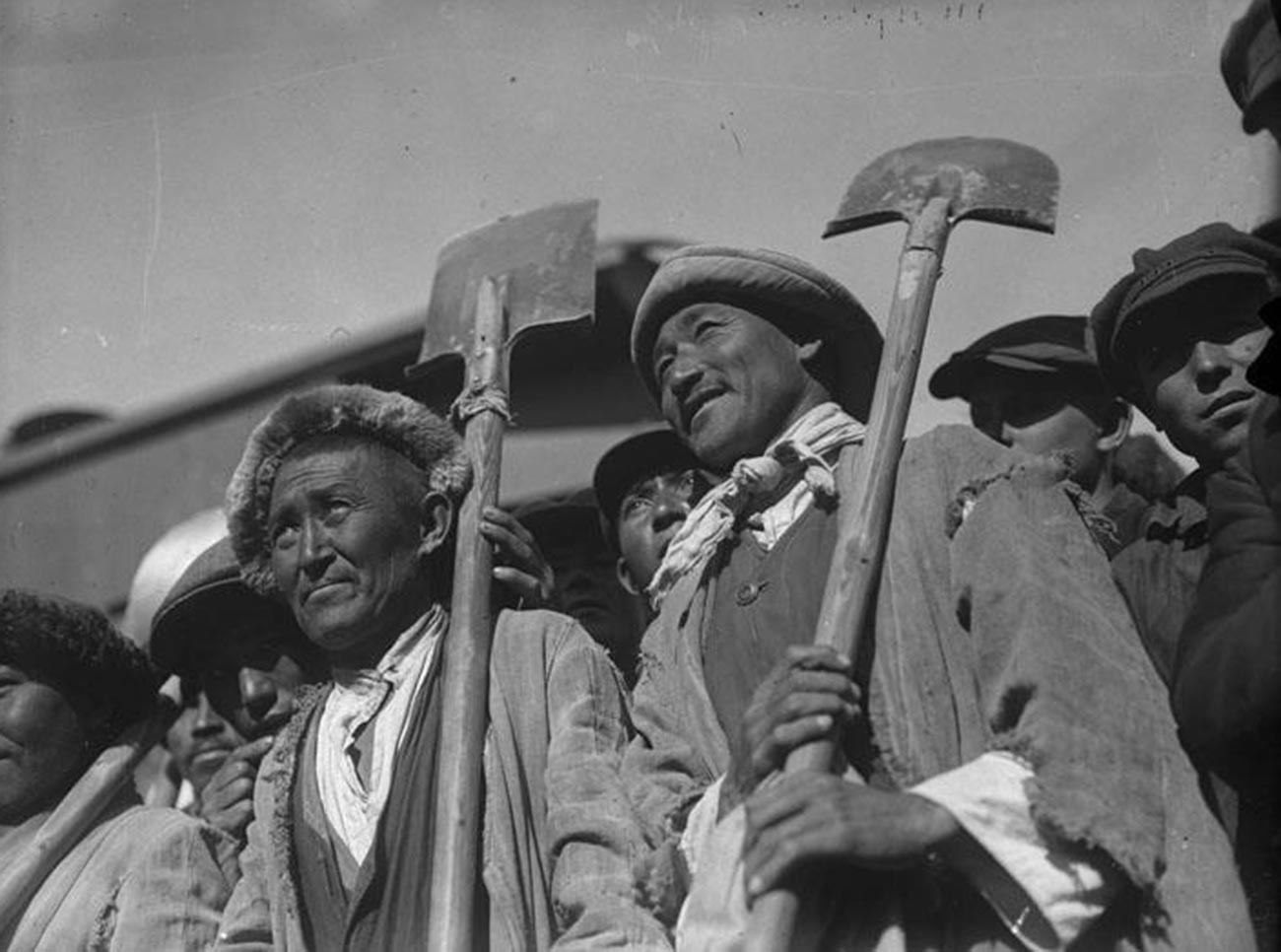
Kazakh builders of TURKSIB, one of the main construction projects of the first five-year plan of Stalin's industrialization. The railway connected Siberia with Kazakh and Kyrgyz republics; 1930.
Arkady Shaykhet/МАММ/MDF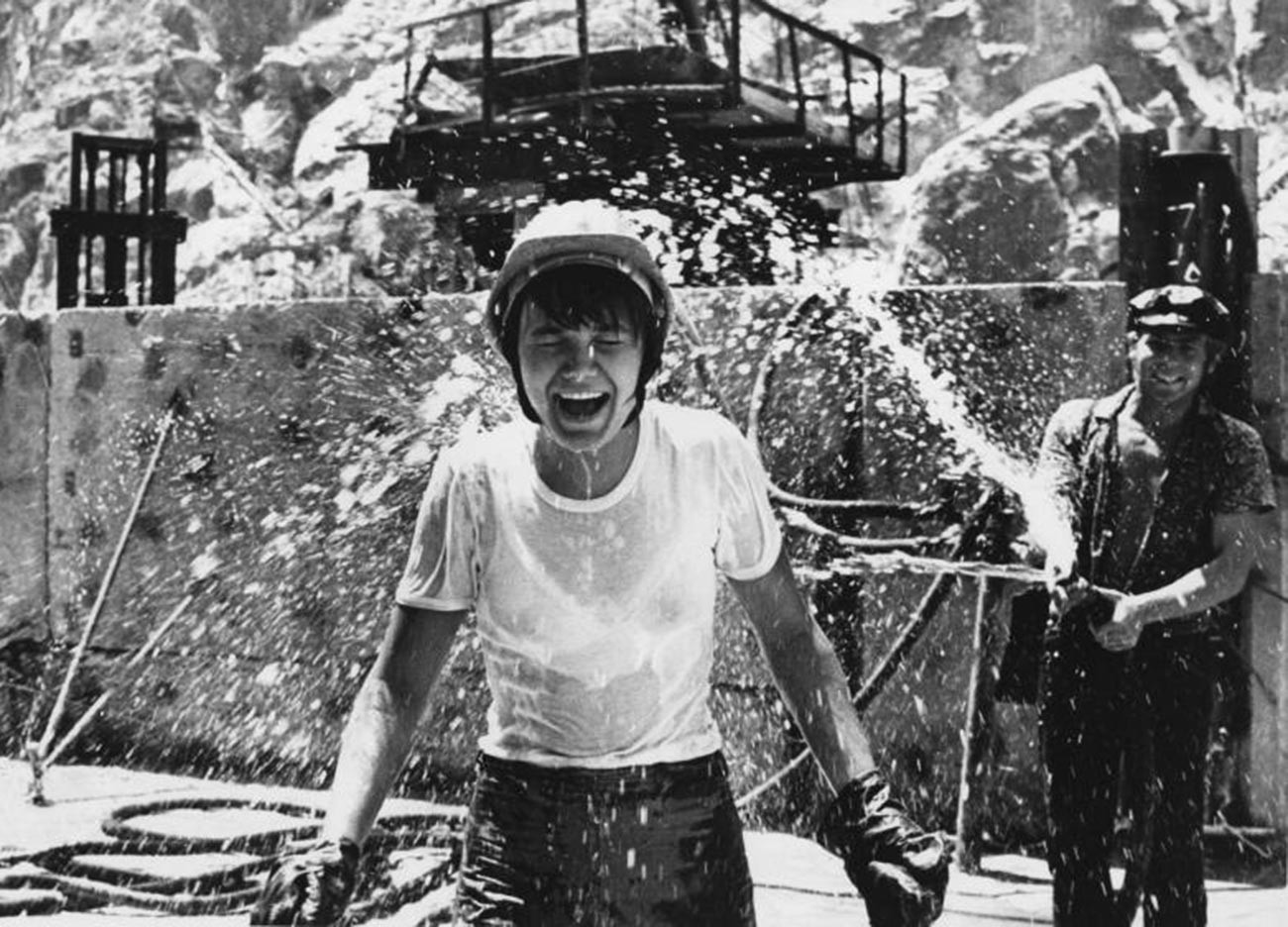
At the construction site of Toktogulskaya hydropower plant, Kyrgyz SSR; 1975-1976.
Vsevolod Tarasevich/МАММ/MDF
Construction work on the Great Fergana Canal named in honor of Stalin. The 350 km canal made it possible to irrigate over 500,000 hectares of land in the Uzbek, Kyrgyz, and Tajik republics; 1939.
Arkady Shaykhet/МАММ/MDF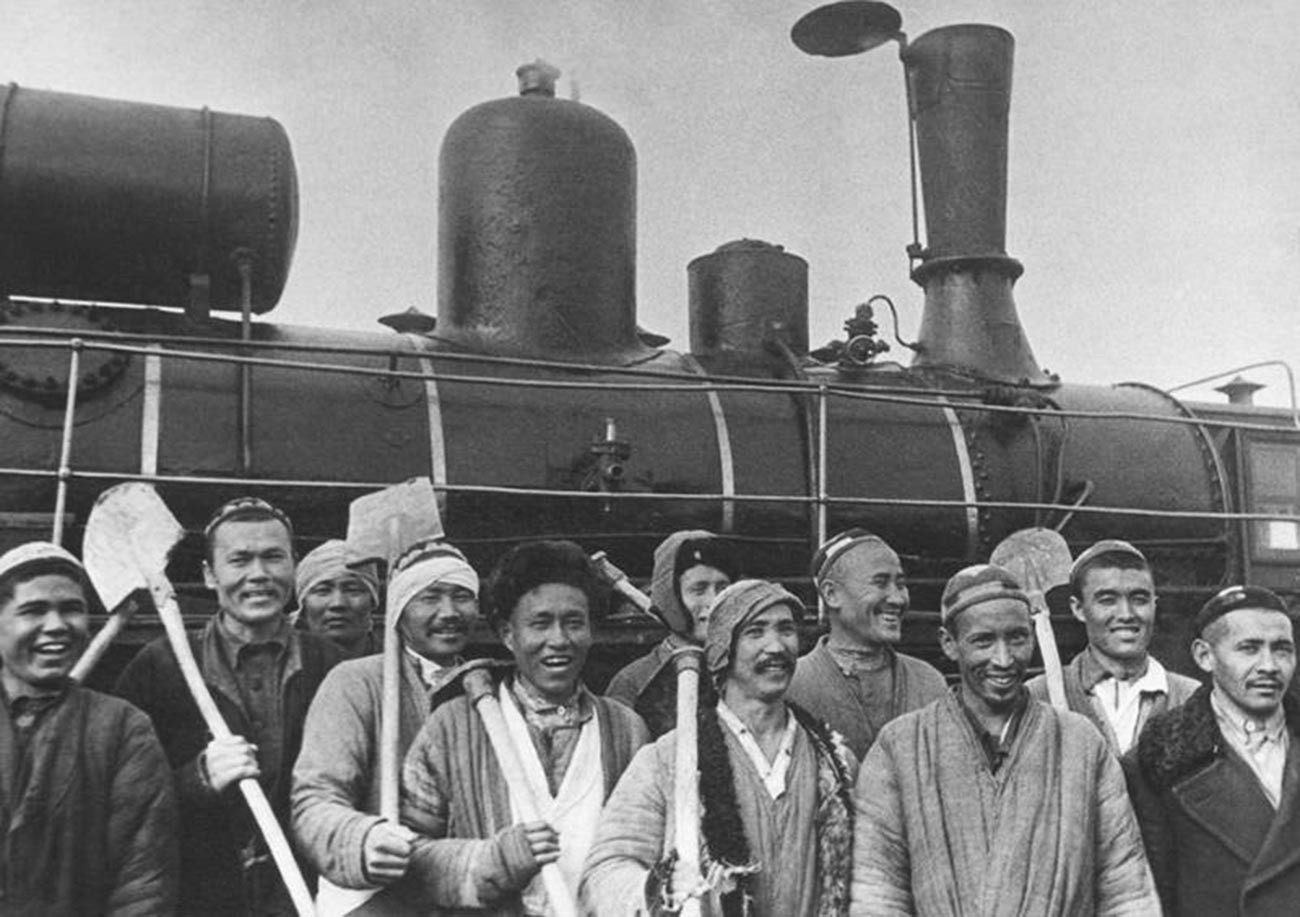
Collective farmers from the Tashkent Region set off for the construction site of the Chirchik Machine-building Plant, an industrial giant that produced literally everything, from bombs to tractors; 1930s.
Max Penson/МАММ/MDF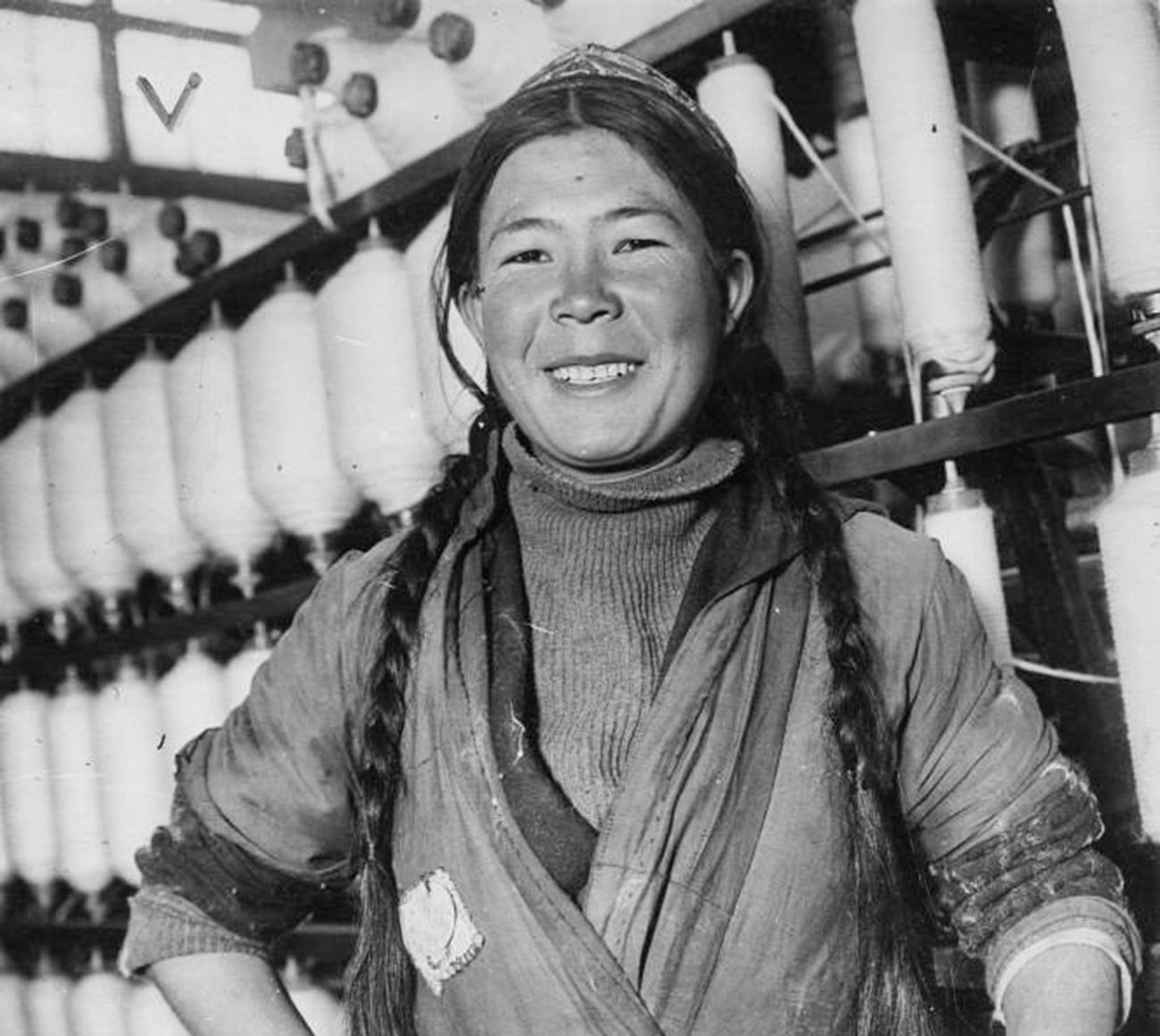
Stakhanovite Gemulin Geledzhiyeva from the Tajik Republic; 1936.
Arkady Shaykhet/МАММ/MDF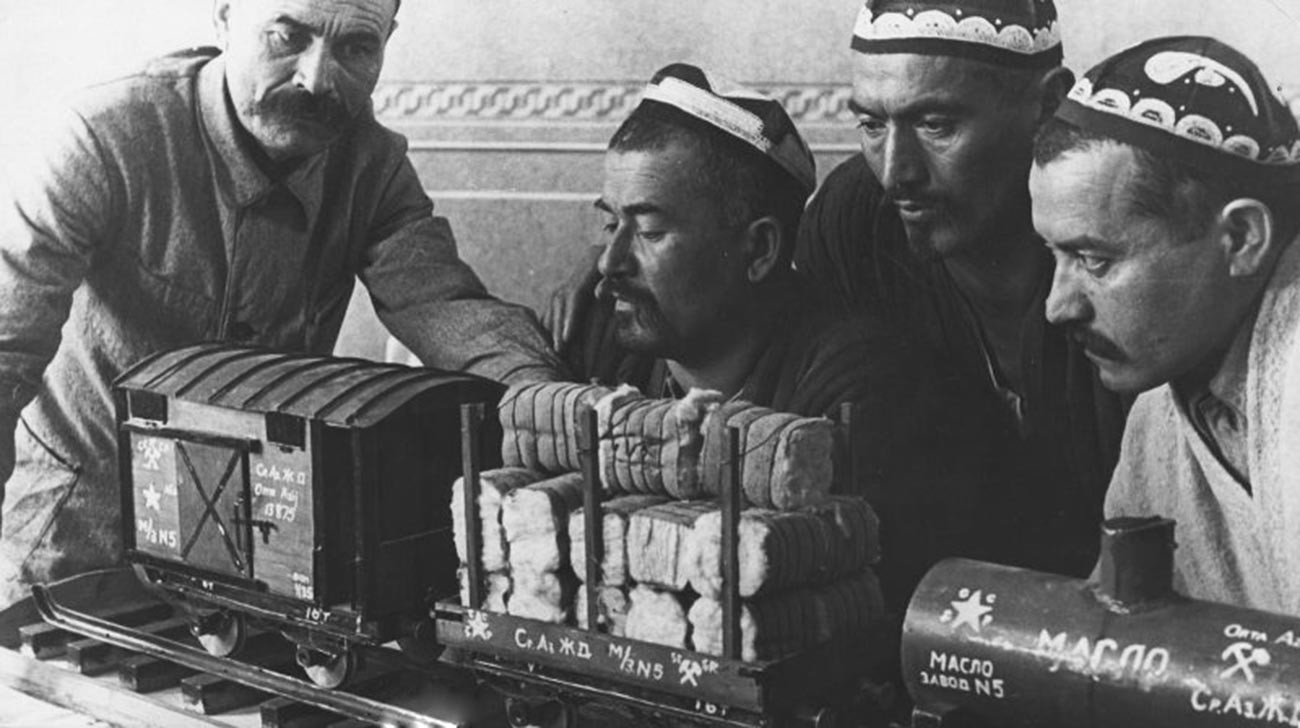
A model train, Uzbek SSR; 1930-1949.
Max Penson/МАММ/MDF
Stakhanovite Maria Nasilbayeva, a worker at the Alma-Ata cotton mill, grew up in an orphanage. Her team fulfills the production plan by 200 percent. From the archive of Ogonyok magazine; 1950.
Boris Kuzmin/МАММ/MDFLocal flavor
The authorities in Moscow supported the development of local crafts and encouraged the production of ‘exotic’ items. Thanks to the Central Asian republics, residents of the central part of the USSR had the opportunity to buy carpets, which they loved hanging on walls, and to try delicious fruits. At the same time, the inhabitants of Central Asia enjoyed inventions by metropolitan designers, and listened to radio even in the steppe.
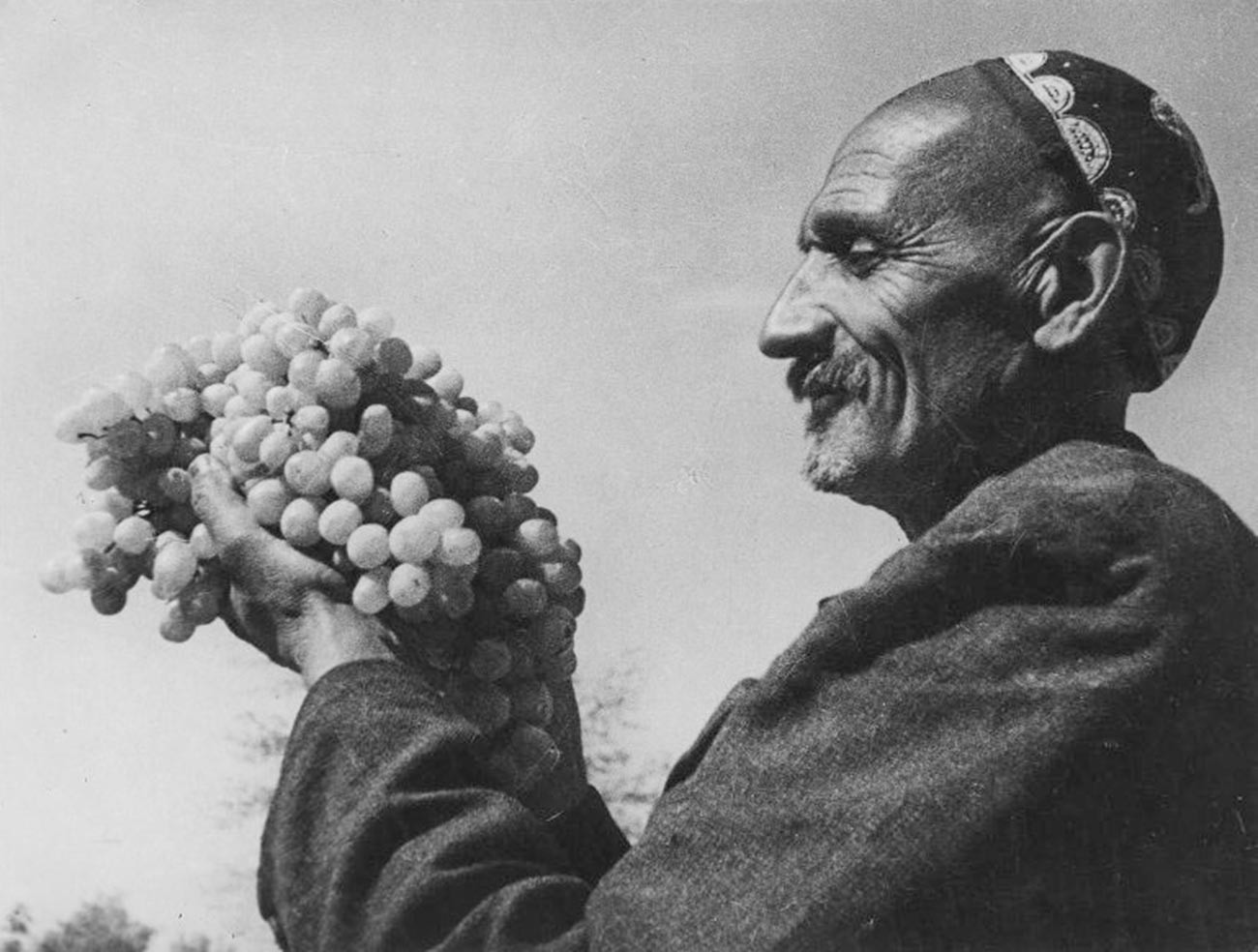
The Uzbek Republic’s leading and most decorated winegrower, Rizamat Musamukhamedov, bred a new grape variety, Rundweis (aka Bayan Shirey); 1939.
Max Penson/МАММ/MDF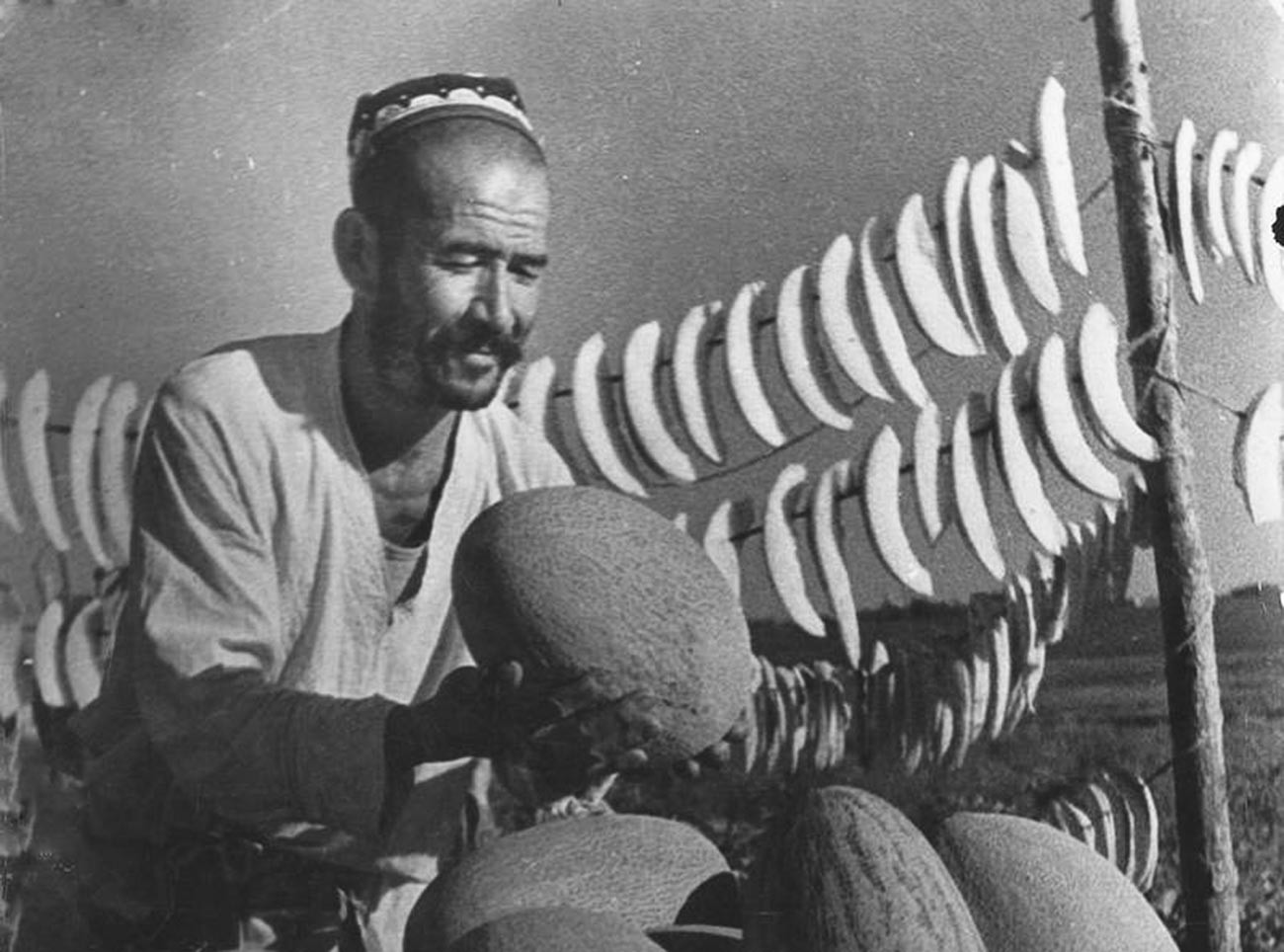
A melon seller, Uzbek SSR; 1930s.
Max Penson/МАММ/MDF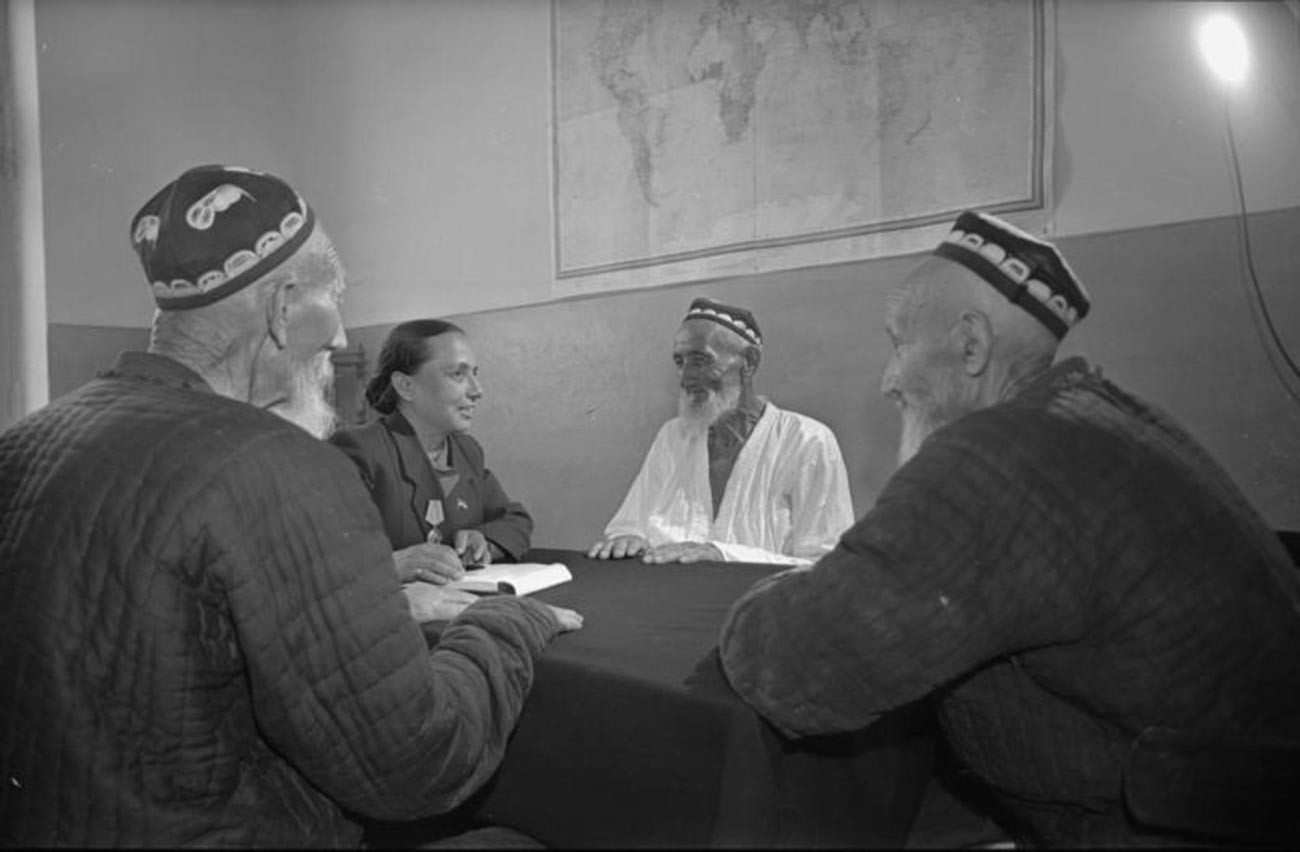
A local councilor receives voters in Uzbek SSR; 1950s.
Unknown photographer/МАММ/MDF
Tea drinking, Uzbek SSR; 1930s.
Ivan Panov/МАММ/MDF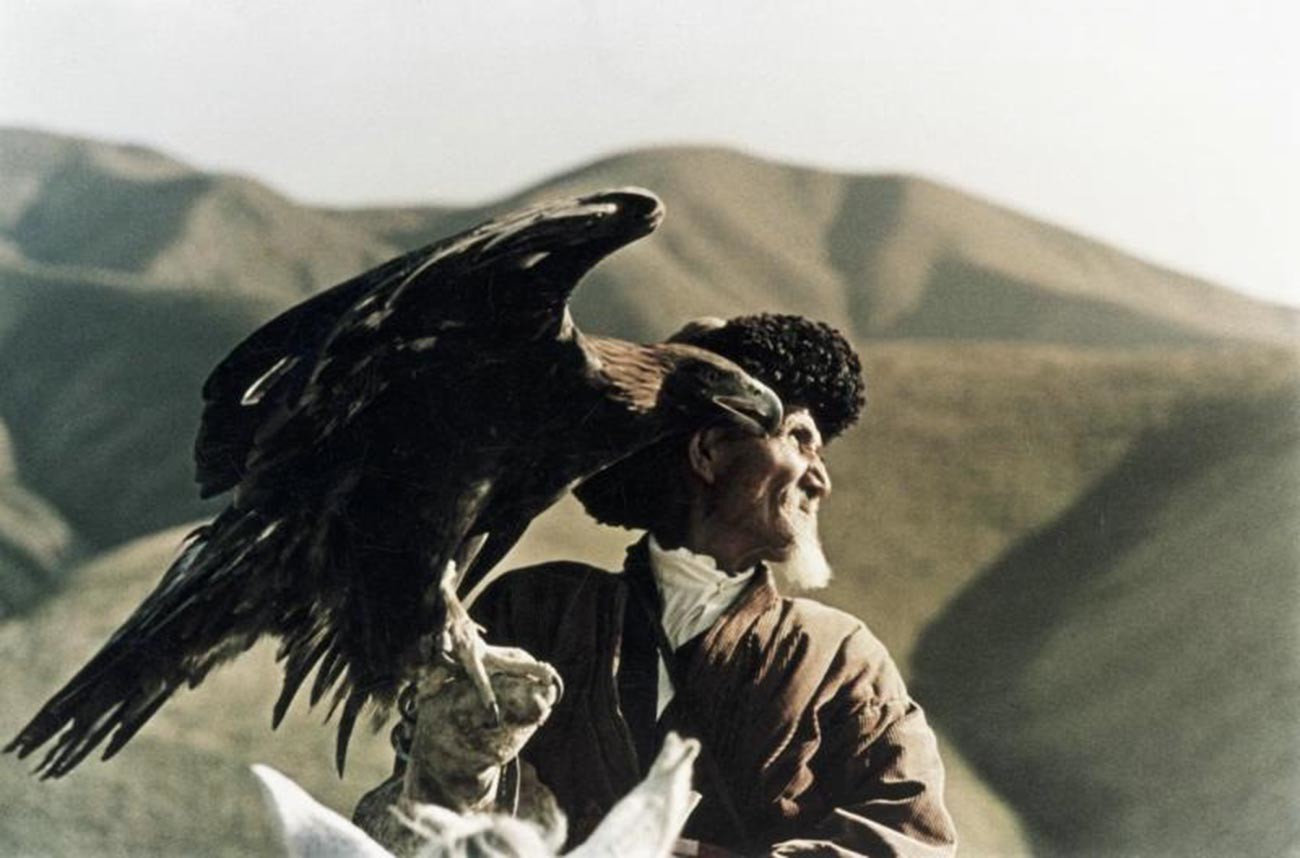
A hunter with a golden eagle, the Kazakh Republic; 1963.
Lev Borodulin /МАММ/MDF
A shepherd and a radio-set. Kazakh virgin lands; 1952.
Arkady Shaykhet/МАММ/MDF
Virgin lands. A shepherd family outside a yurt; 1952.
Arkady Shaykhet/МАММ/MDF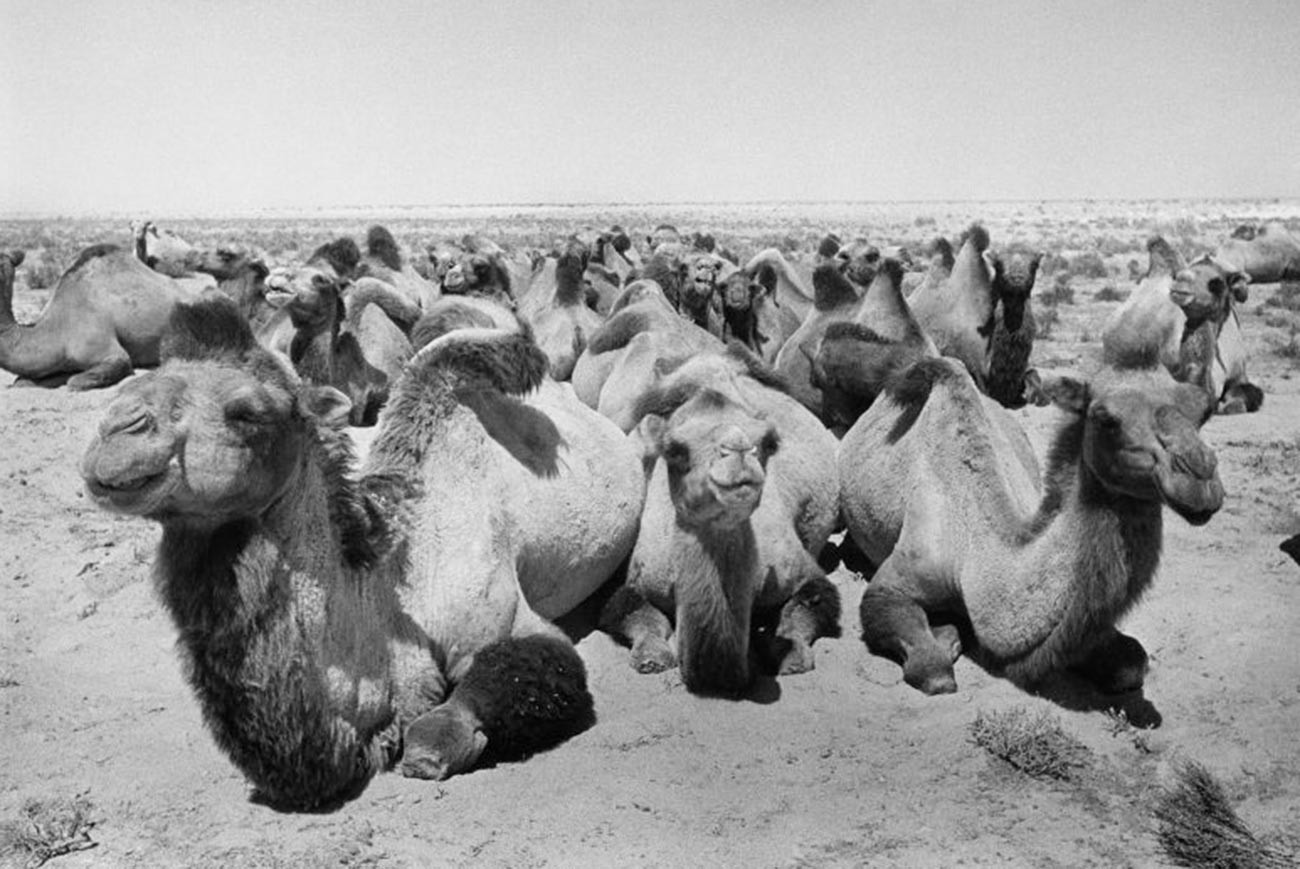
Camels in Kazakh steppes; August 1952.
Arkady Shaykhet/МАММ/MDF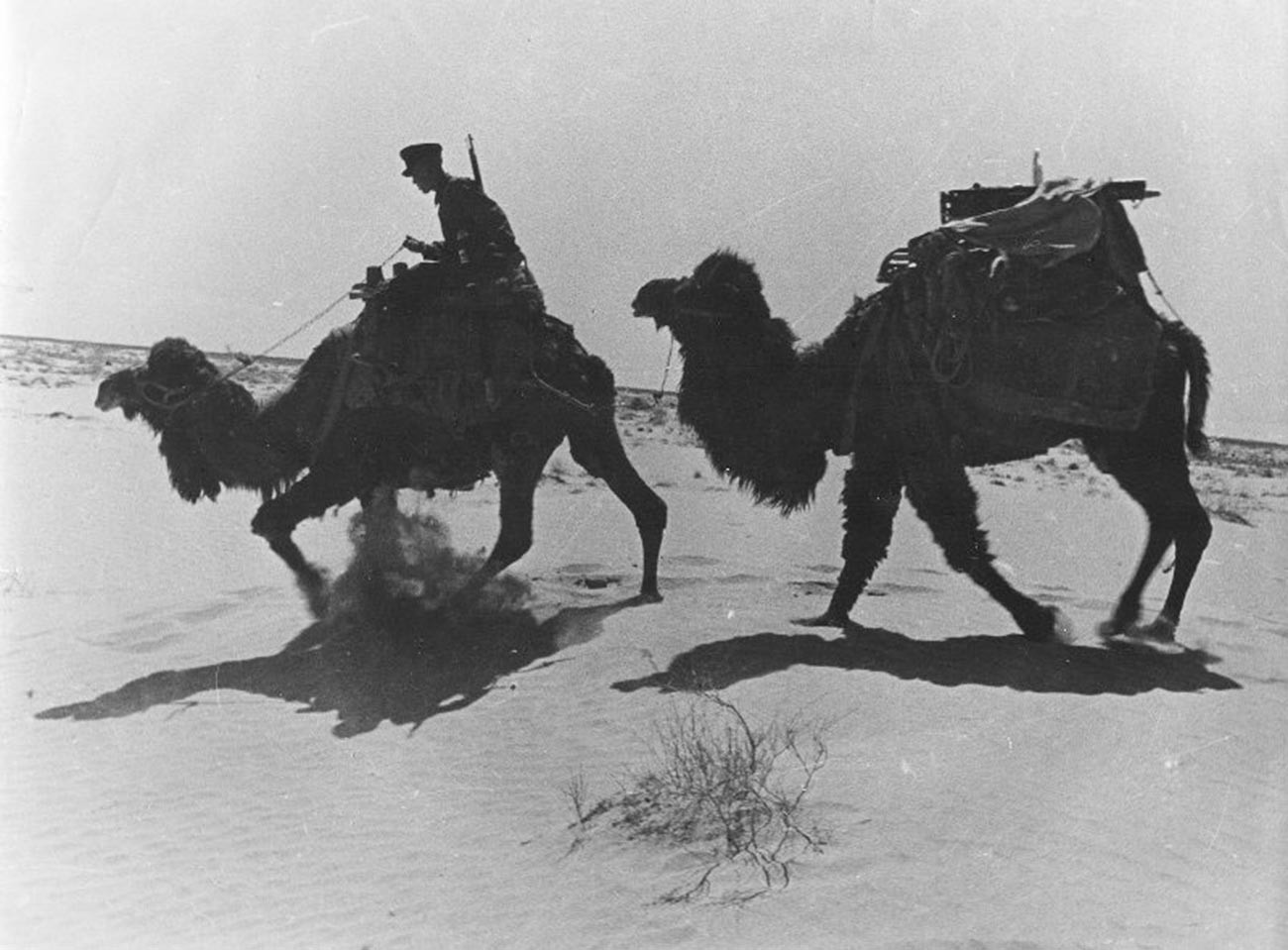
A border guard in Turkmen SSR; 1930s.
Boris Kudoyarov/МАММ/MDF
Woodcarving, Tajik SSR; 1950s.
А. Shakhovskoy/МАММ/MDFArchitecture
Foreign travel was out of reach for most Soviet people, but many could still travel to other Soviet republics. For example, Muscovites could go on a trip to Alma-Aty or Tashkent. Many Central Asian cities had numerous preserved historical buildings, as well as new buildings erected in the Soviet modernist or constructivist style.
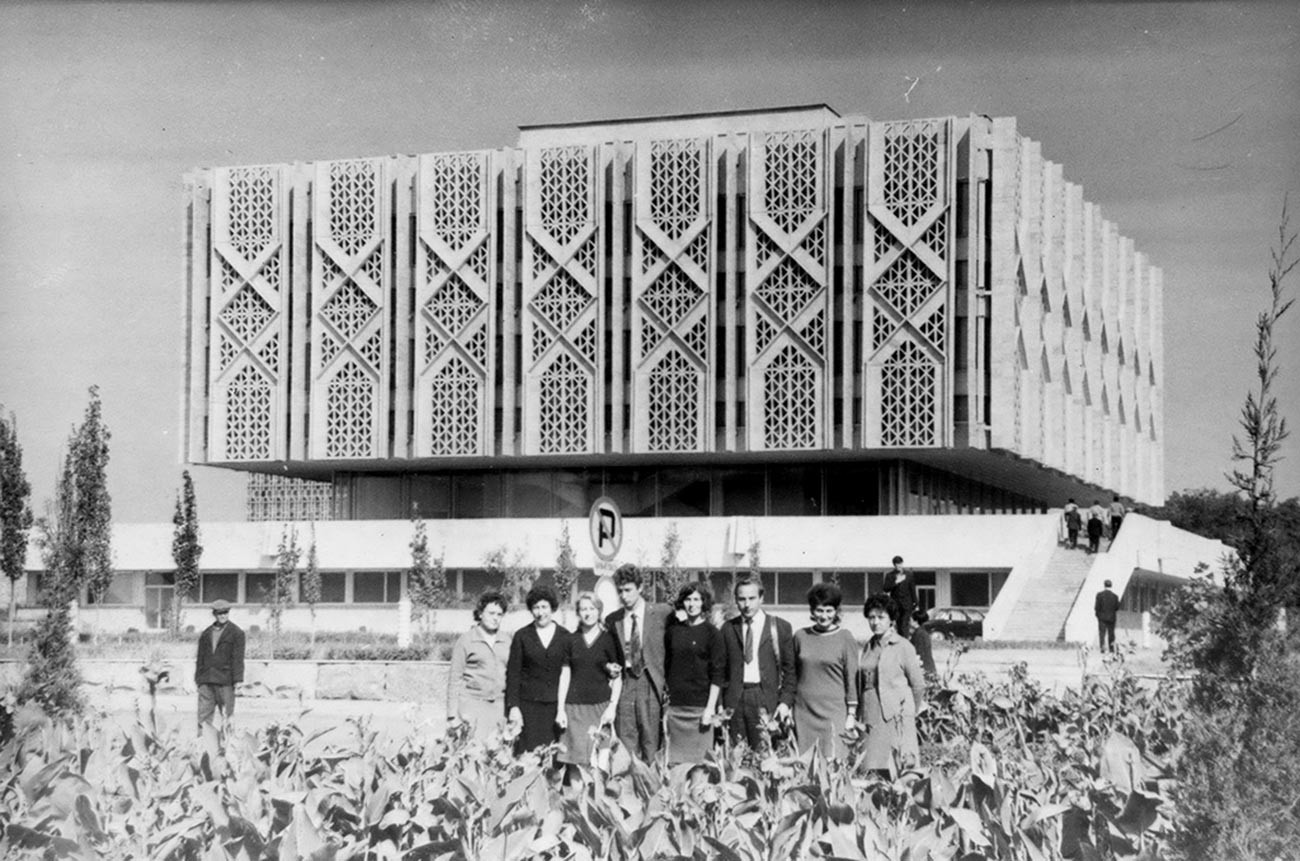
A tour of the capital cities of the Soviet Socialist Republics of Central Asia. A group of tourists with the Lenin Museum in the background, Tashkent; 1972.
Sharapovs and Afanasyevs’ archive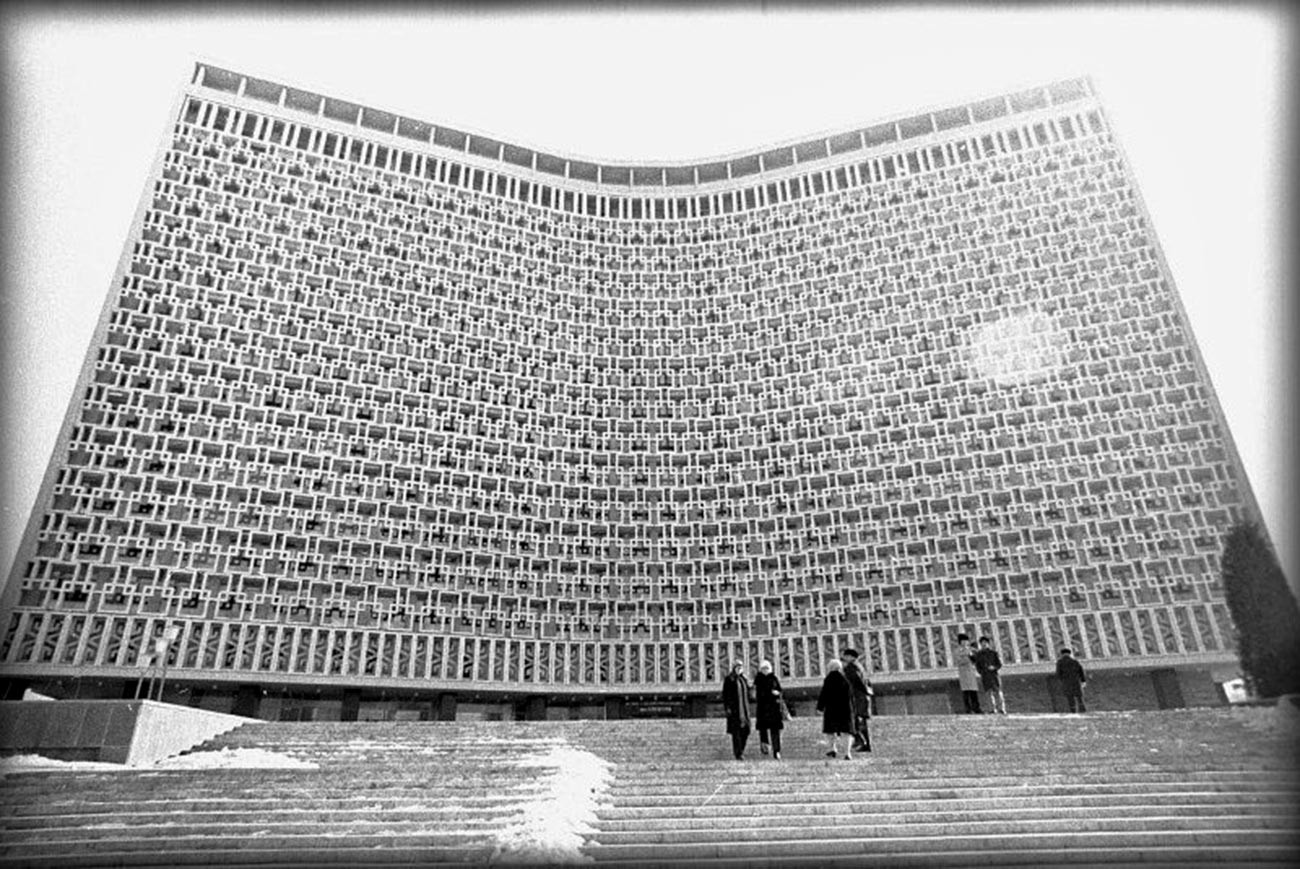
Hotel Uzbek in Tashkent; 1974-1976.
Viktor Yershov/МАММ/MDF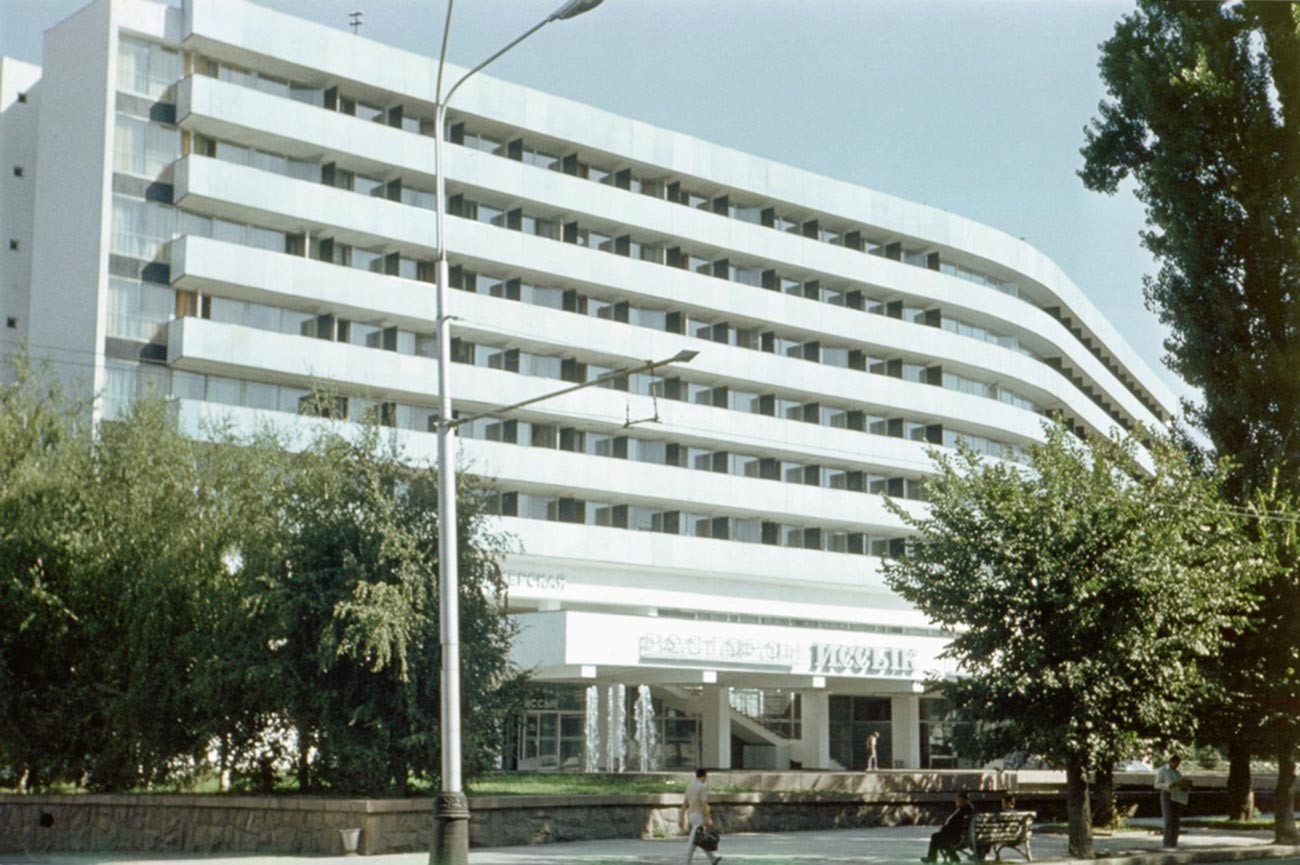
A hotel in Alma-Aty, Kazakh SSR; 1978.
Nikita Vlasov/Vladimir Alexandrovich Karlov’s archive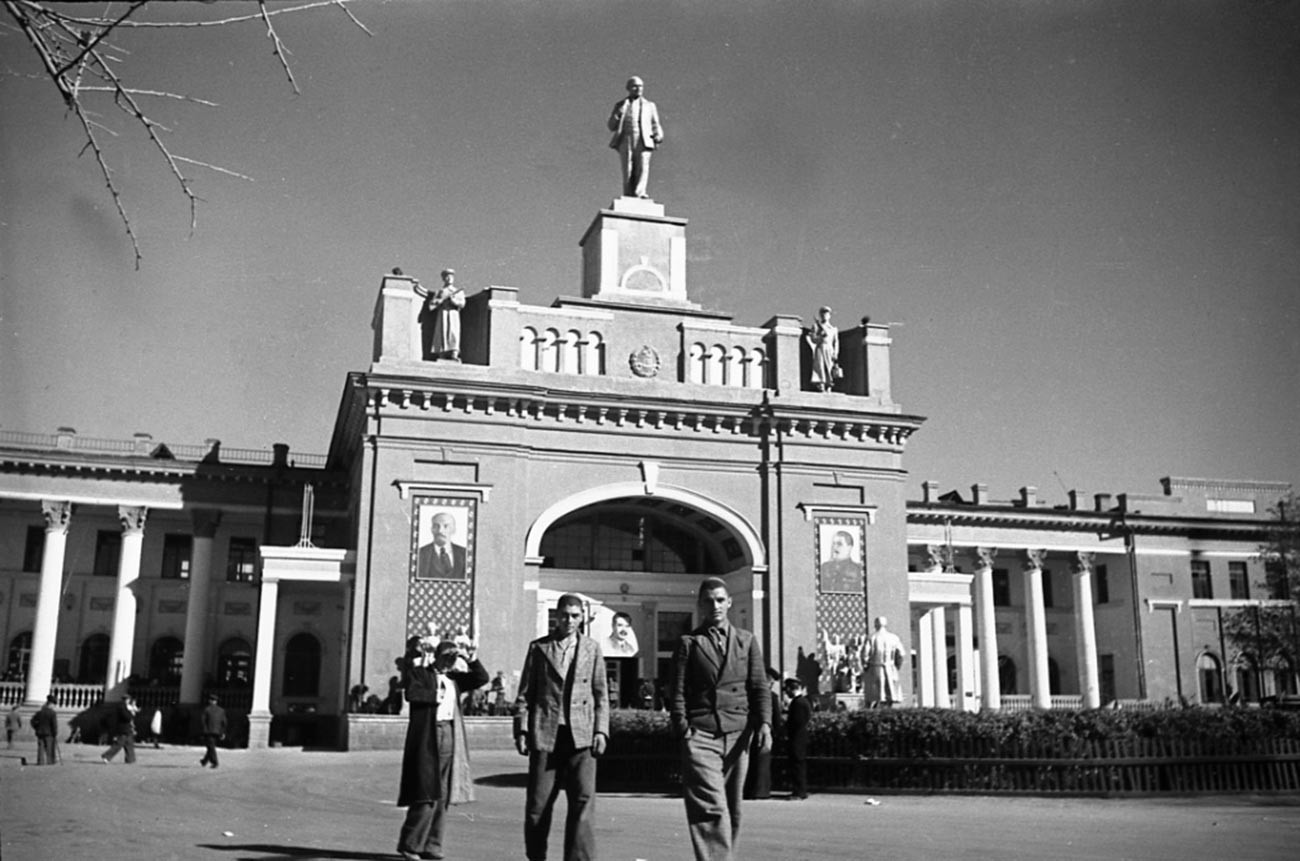
A railway station in Ashkhabad; 1940s.
Unknown photographer/Alexei Zakharov’s archive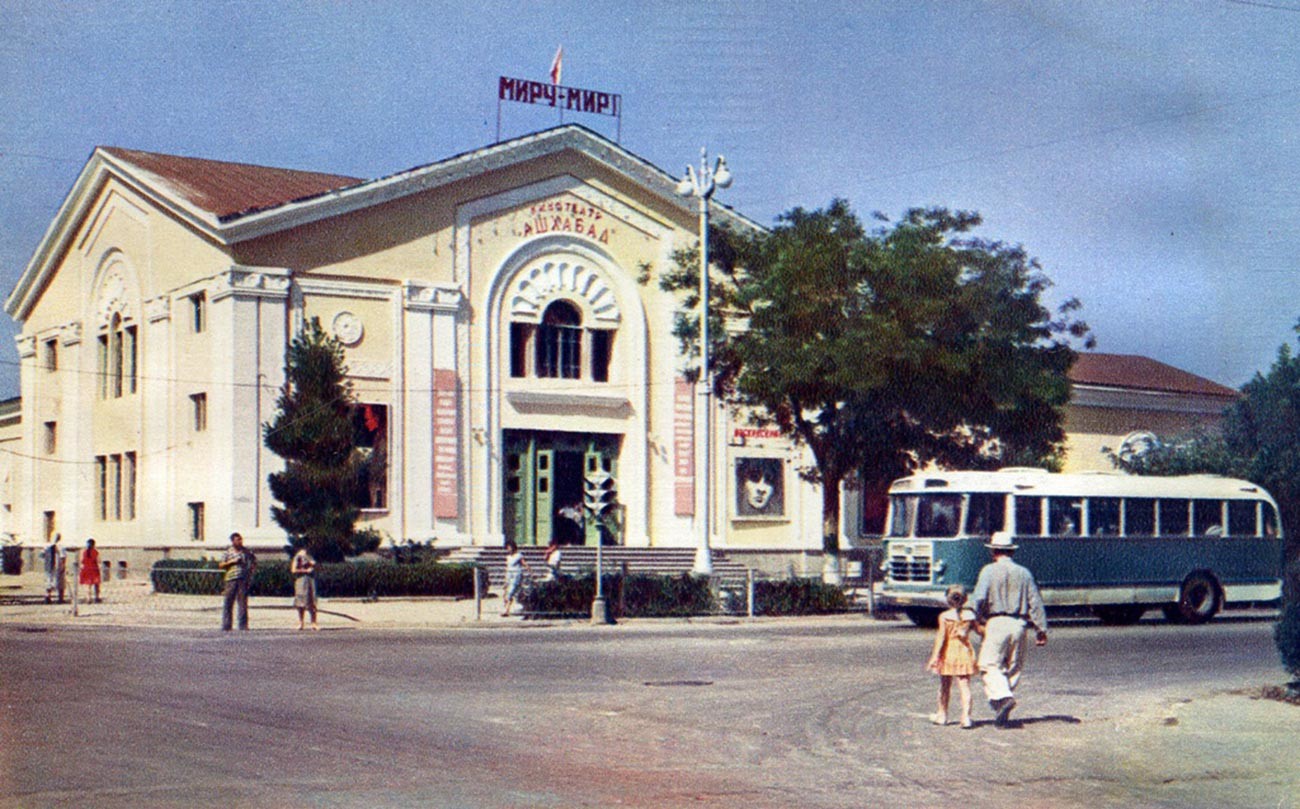
A cinema theater in Ashkhabad; 1940s.
Unknown photographer/Alexei Zakharov’s archiveAgitprop
Many Central Asian place names were changed to Soviet ones. For example, the Kazakh city of Akmolinsk (present-day Nur-Sultan) in Soviet times was renamed Tselinograd (tselina means a virgin land). Meanwhile, Dushanbe, the capital of the Tajik Republic, was named Stalinabad. Every major city in Central Asia had a monument to Lenin, and many buildings were decorated with agitprop mosaics. Street names had the words Revolution, Gorky, and Peace in them – same as in many cities across the USSR.
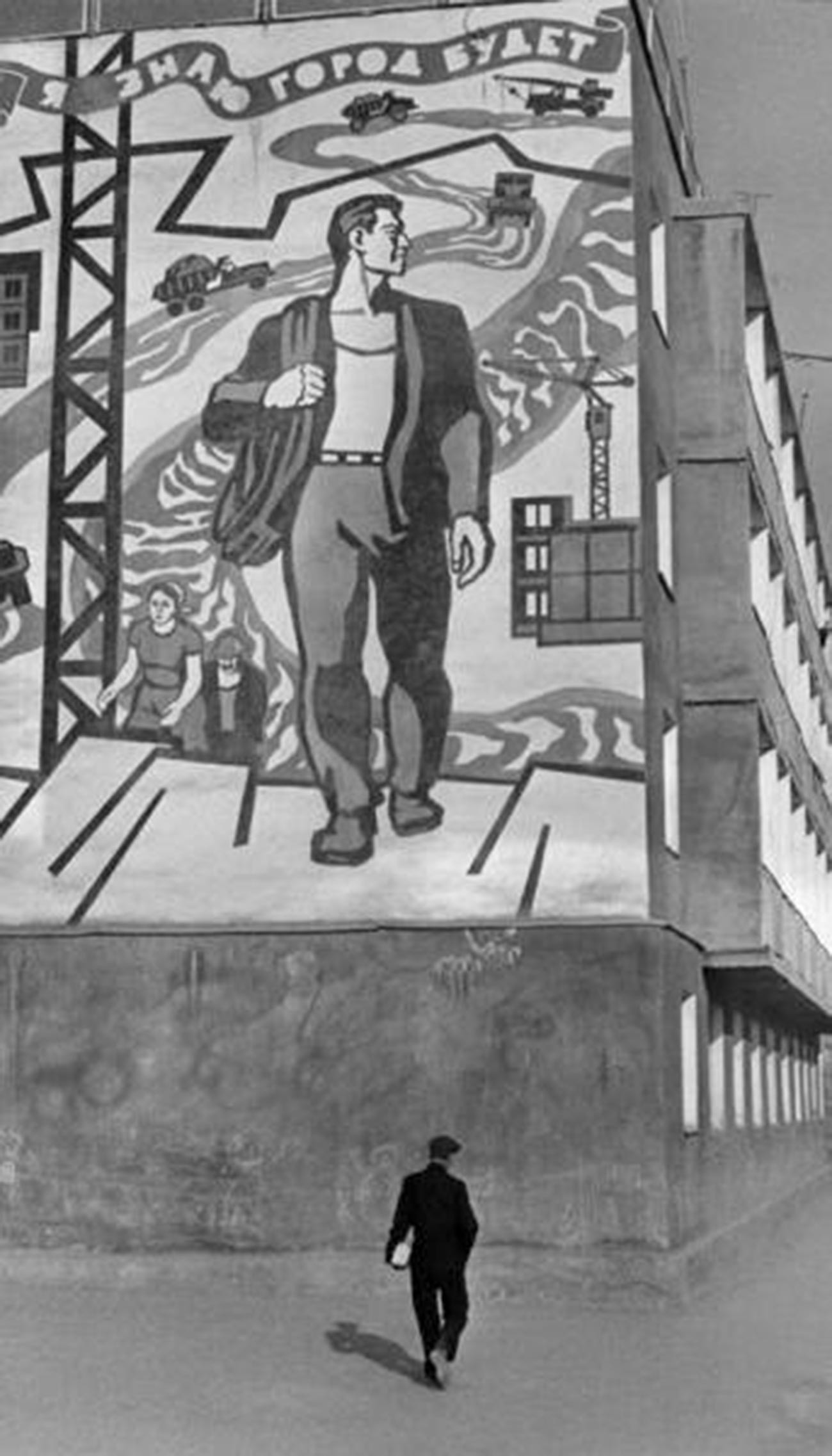
“I know, the city will come”, Nurek, Tajik SSR; 1960s.
Gennady Koposov/МАММ/MDF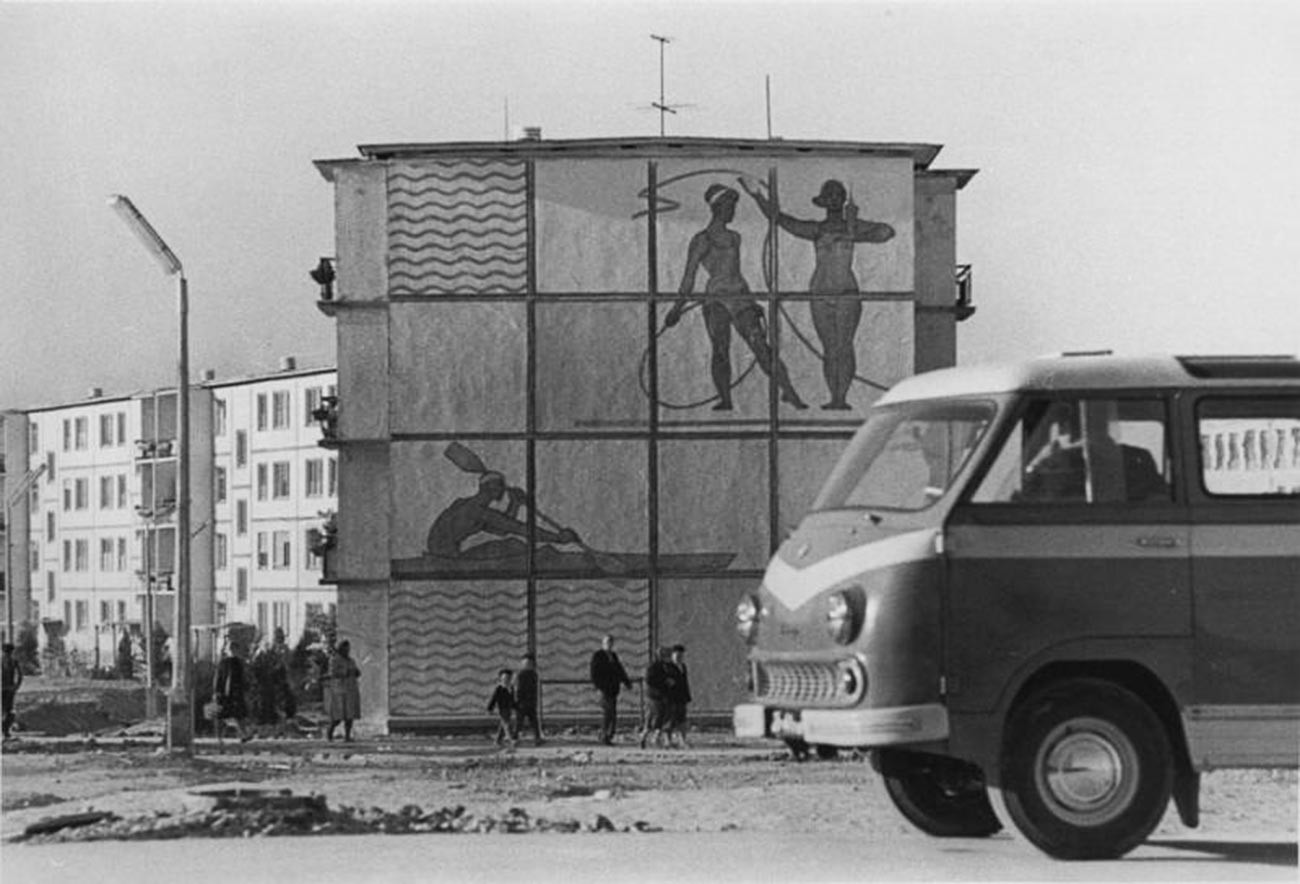
A residential neighborhood in the Uzbek Republic; late 1960s – early 1970s.
Vsevolod Tarasevich/МАММ/MDF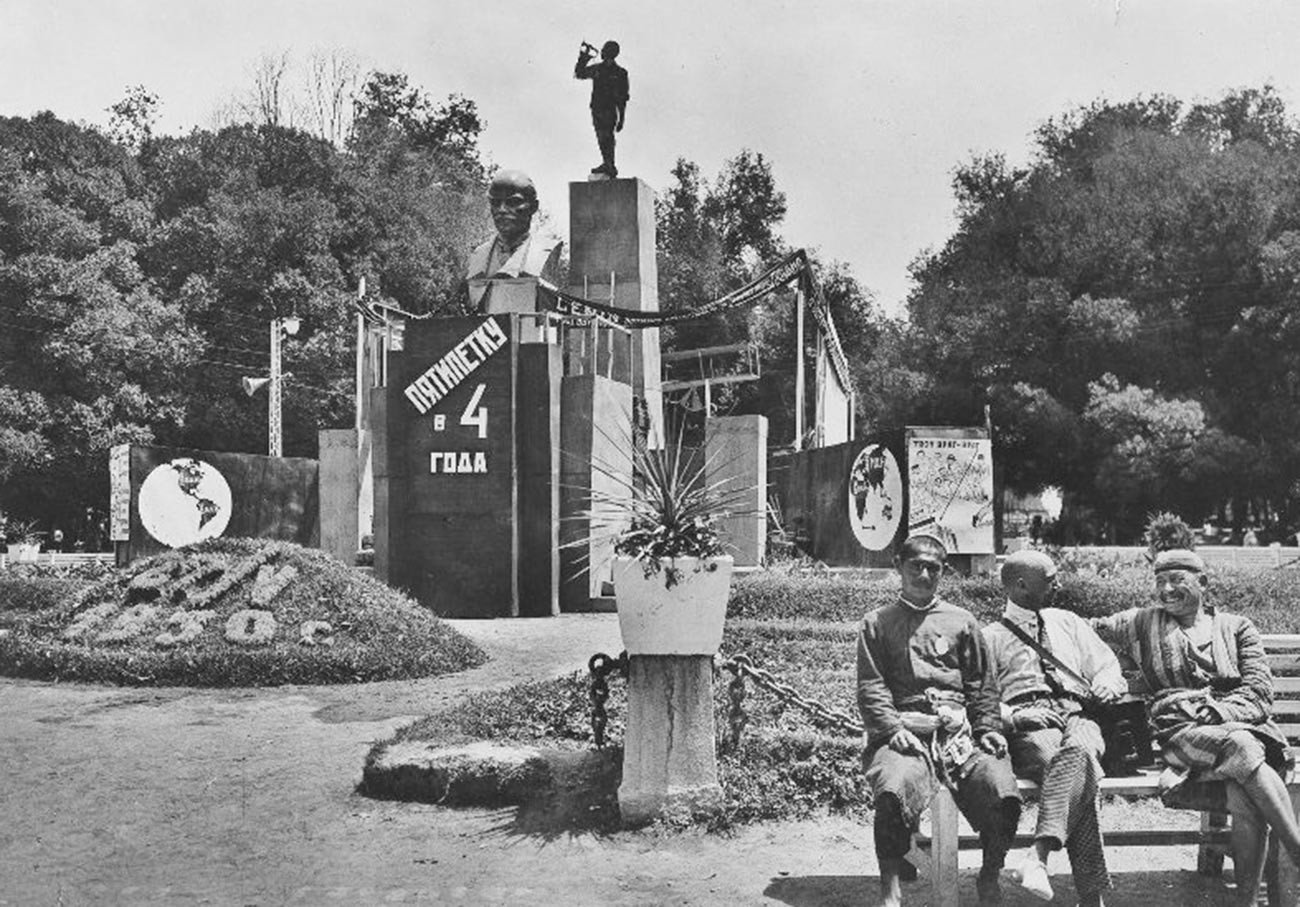
Revolution Square, Tashkent; 1930.
Ivan Panov/ МАММ / MDF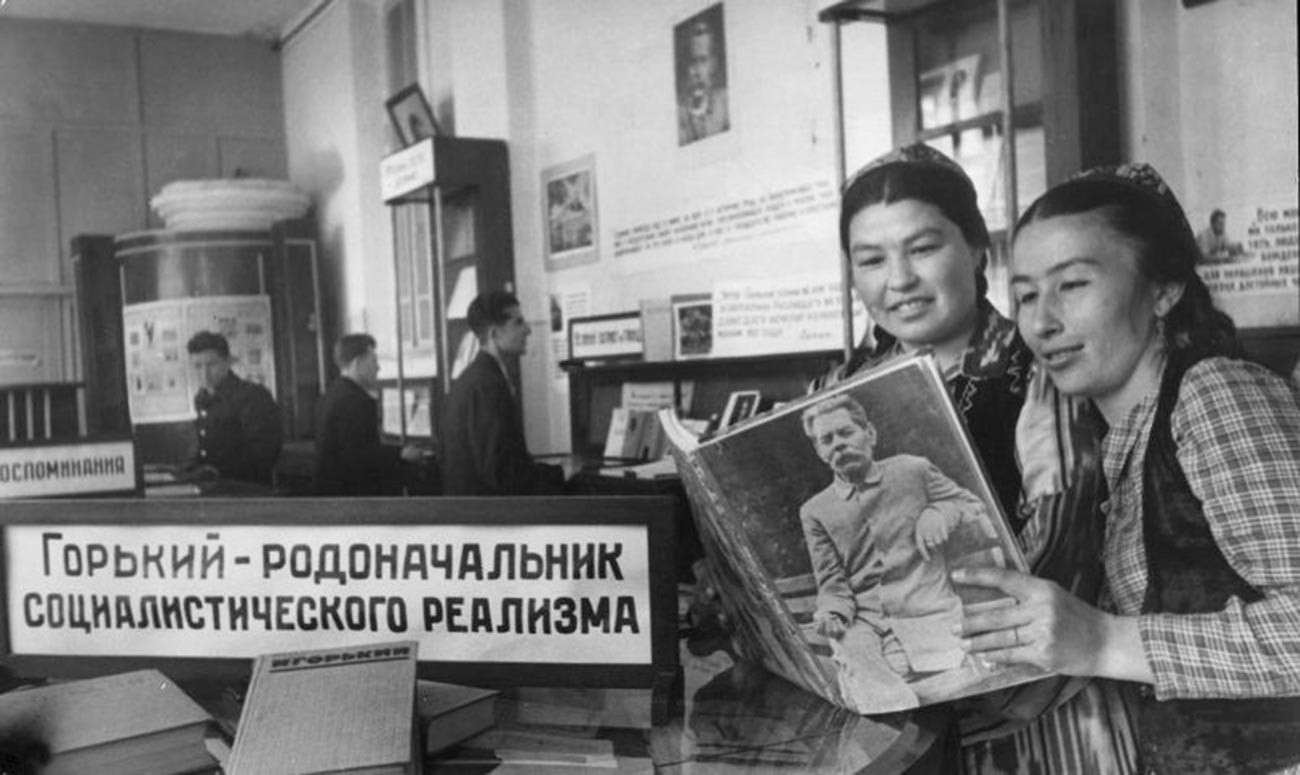
“Gorky – the founder of Socialist Realism”; 1930-1949.
Max Penson/МАММ/MDF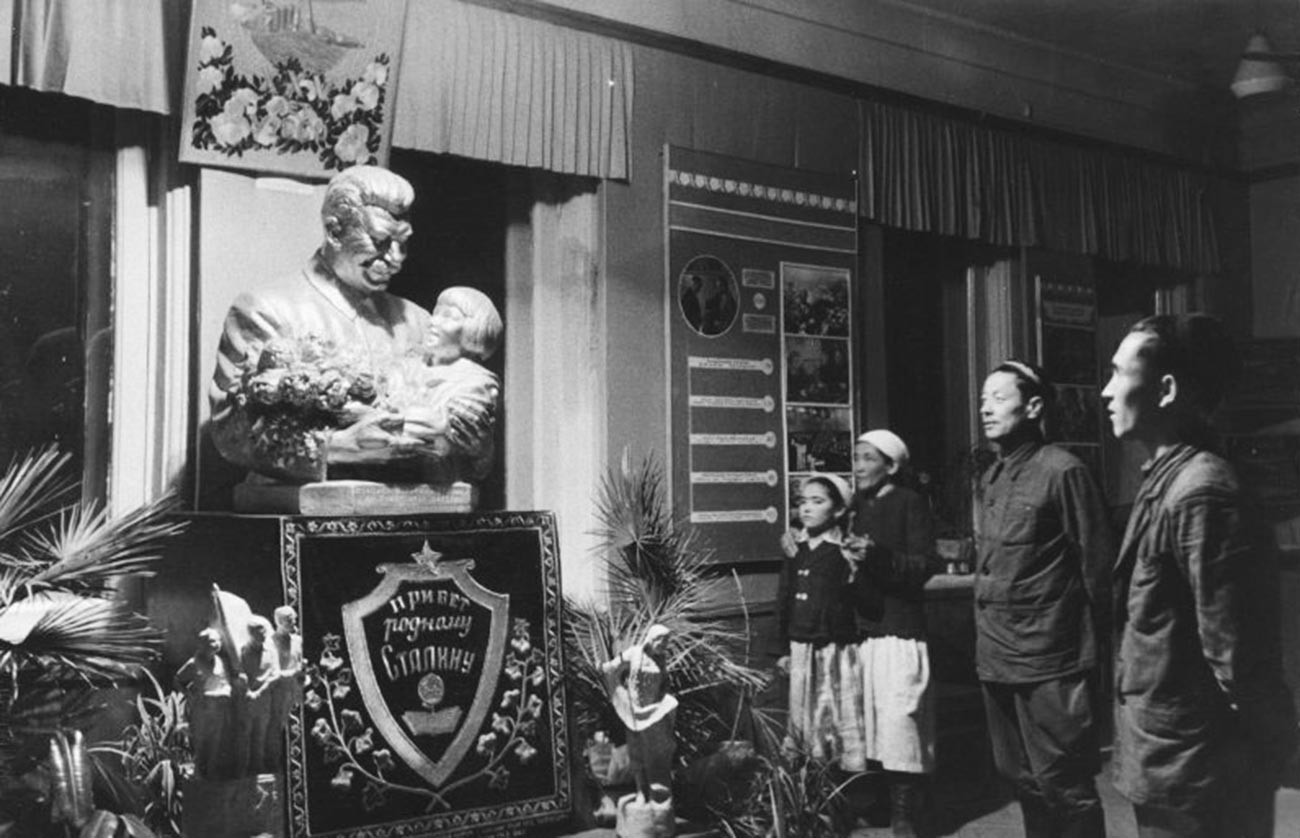
“Greetings to dear Comrade Stalin”, Uzbek SSR; 1930-1949.
Max Penson/МАММ/MDF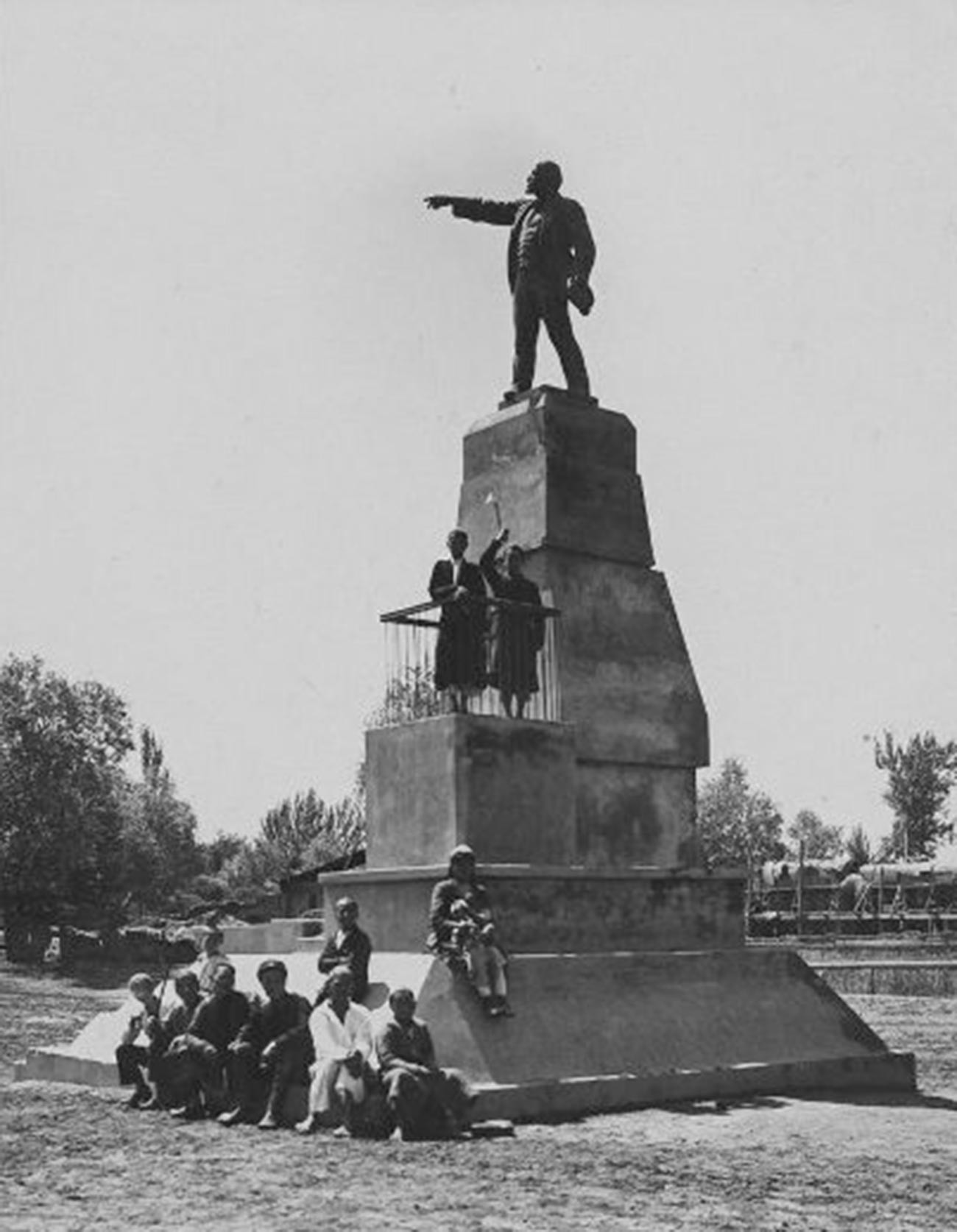
A monument to Vladimir Lenin; Andijan, Uzbek SSR; 1930s
Ivan Panov/ МАММ / MDF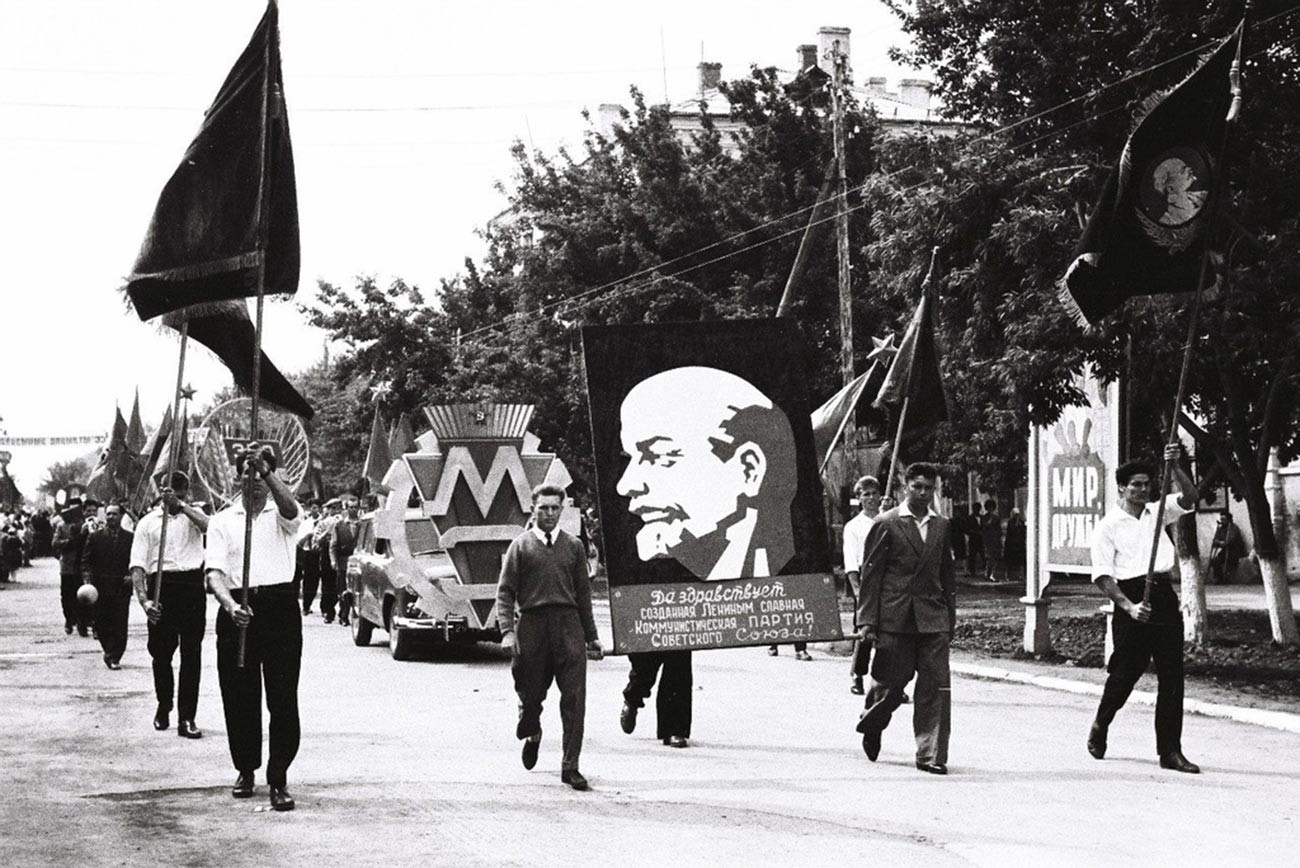
Celebrating the 350th anniversary of the city of Uralsk, Kazakh SSR; September 4-5, 1964.
Boris Veksler/Alexander Zakharik’s archive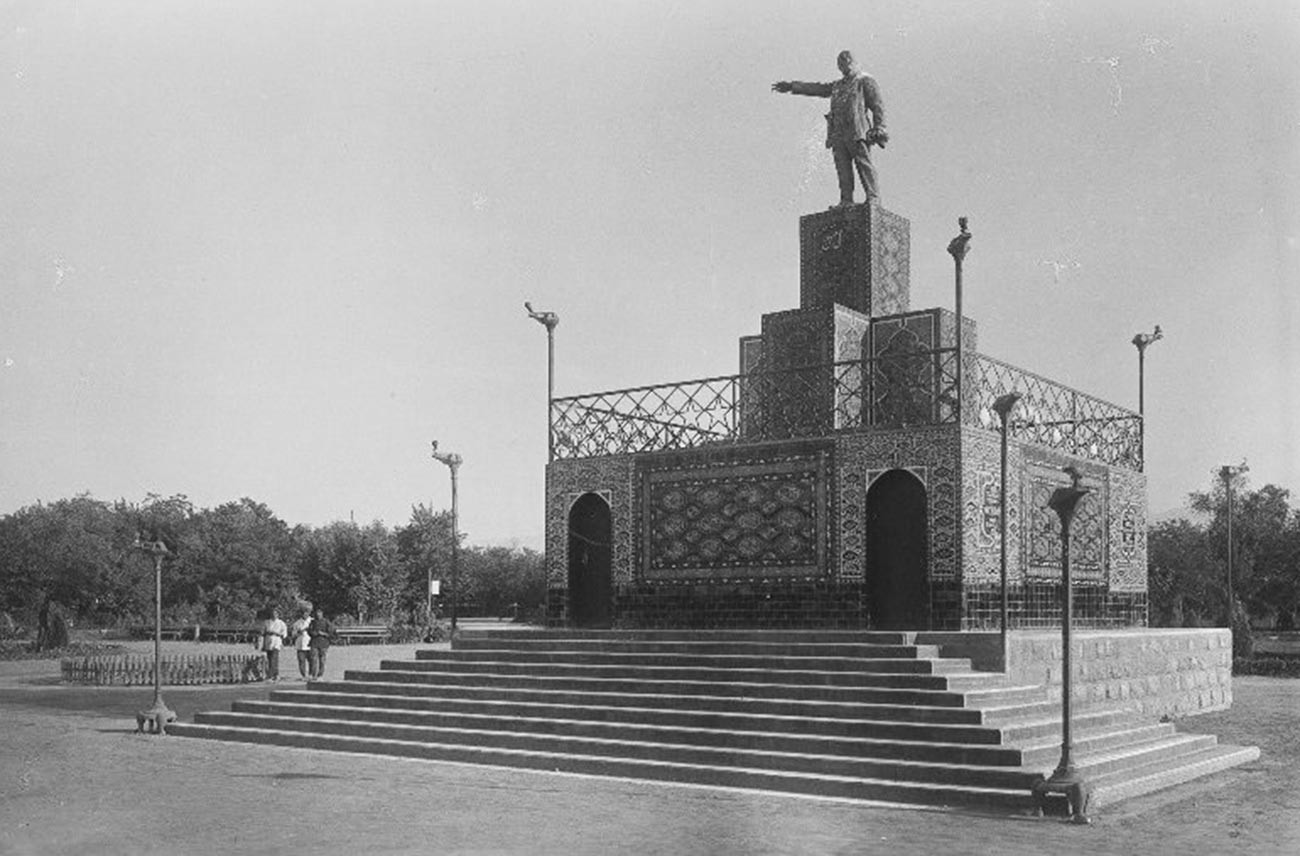
A monument to Vladimir Lenin in Ashkhabad, Turkmen SSR; 1930s.
Ivan Panov/ МАММ / MDFLife
Soviet Asia was predominantly Muslim. As in the rest of the USSR, religion was suppressed and atheism promoted. Mosques were closed or even destroyed. However, the religious system was not dismantled completely. Official Muslim bodies, albeit fully controlled by the state. Praying was not forbidden, but, for example, workers were officially freed from the obligation to observe Ramadan fasting. Also, collecting money for the poor was banned because in the Soviet state there was no need for it.
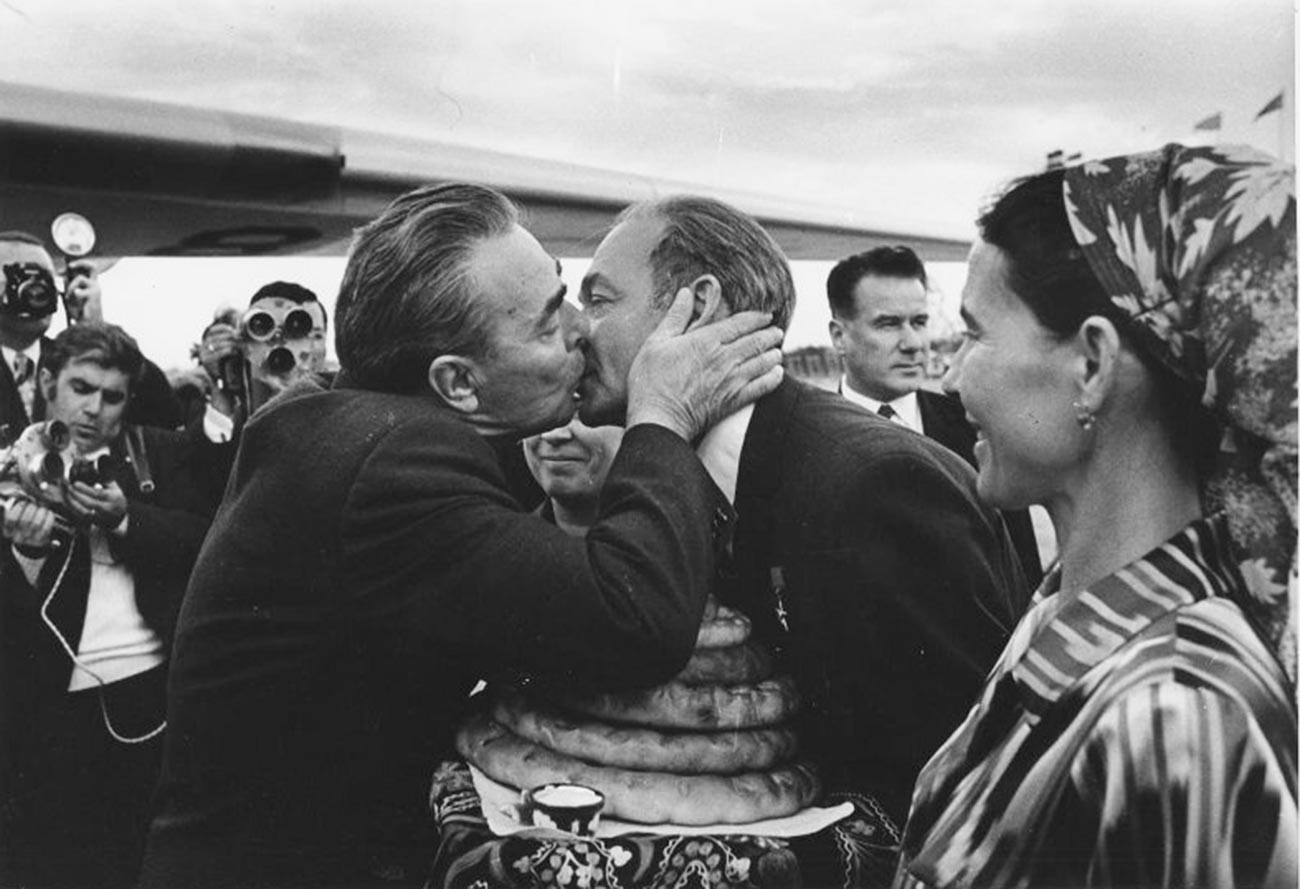
Leonid Brezhnev’s visit to the Uzbek Republic; 1970s.
Dmitry Baltermants/МАММ/MDF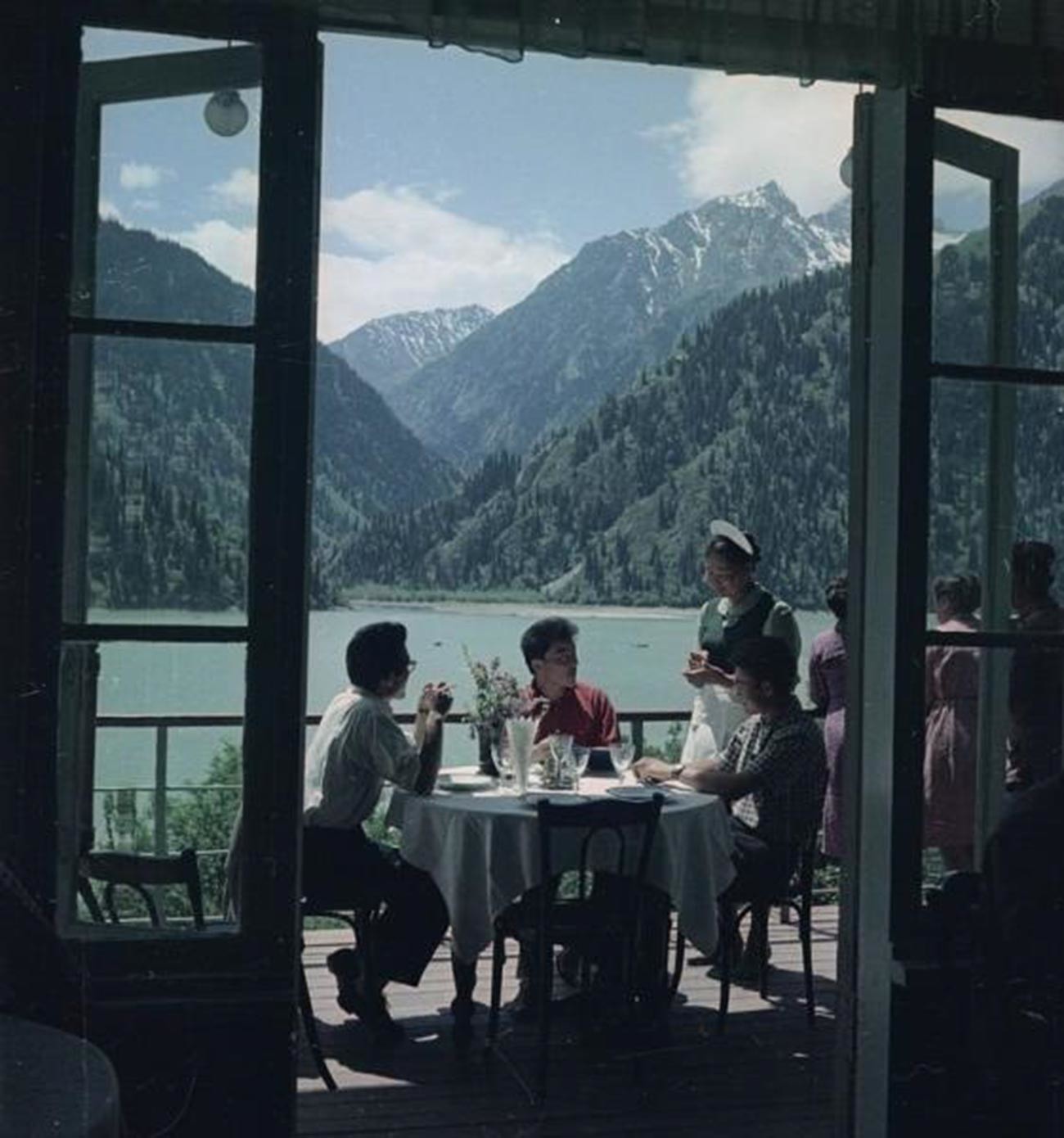
On a restaurant balcony, Lake Issyk, Kazakh SSR; 1961.
Vsevolod Tarasevich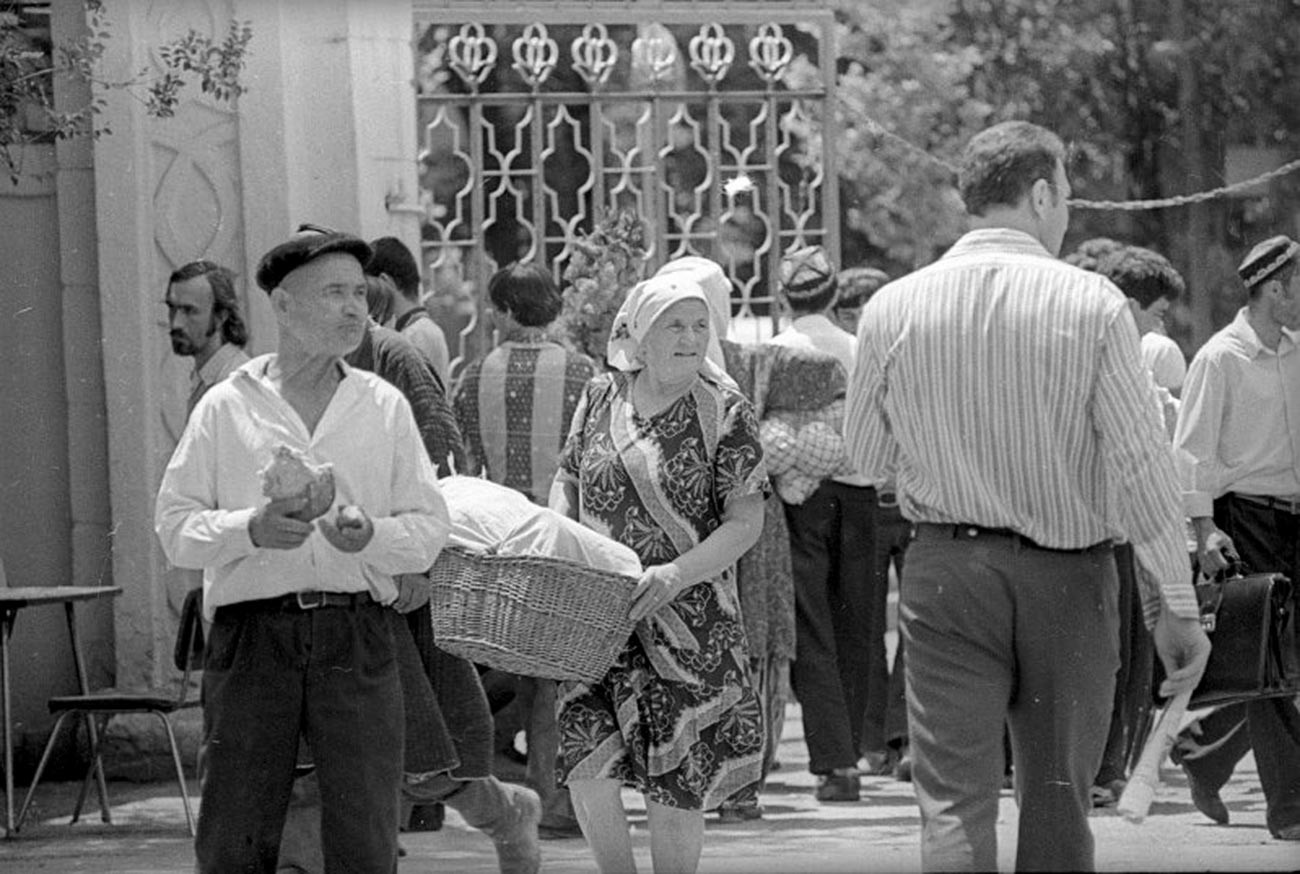
Nurek hydropower plant in the Tajik Republic. A hot day; 1977.
Viktor Yershov/МАММ/MDFThe Pamir Mountains became very popular with Soviet mountaineers and hikers.
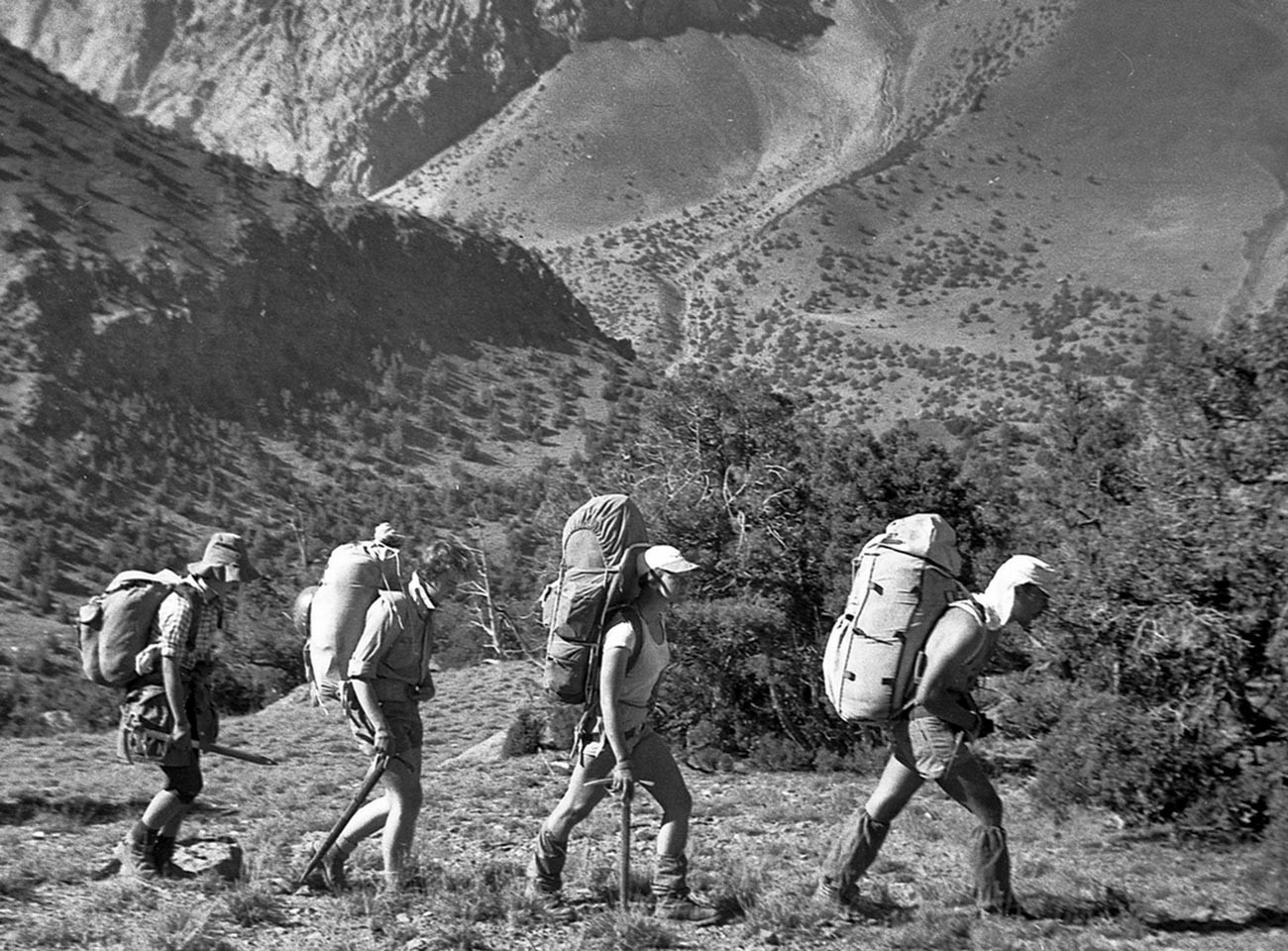
Soviet hikers in Pamir, Tajik SSR; September 3-24, 1986.
Pavel Sukharev/Pavel Sergeyevich Sukharev’s archiveThe Kazakh Republic had numerous settlements for exiles: the Volga Germans and Crimean Tatars were resettled there by force. In addition, the republic had several Gulag camps on its territory, the most infamous of which was the so-called AZhIR, the Akmolinsk Camp for Wives of Traitors to the Motherland, where women were sent because their husbands had been convicted as “enemies of the people”.
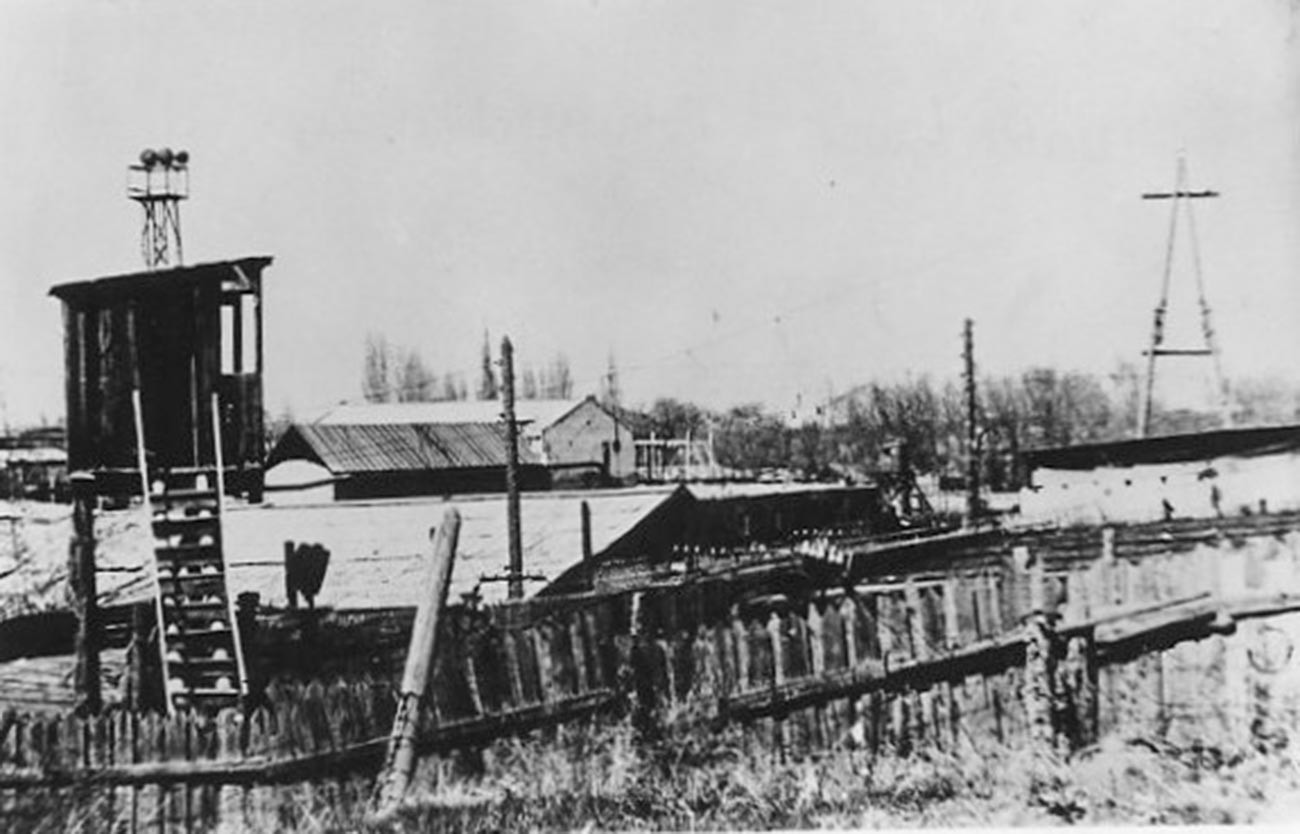
A prison camp in the Kazakh Republic; 1970s.
Sakharov CenterThe first Soviet spaceport was built in the Kazakh steppes: Russia leases and uses it to this day. From there Yuri Gagarin, Valentina Tereshkova, and Alexei Leonov made their first flights.
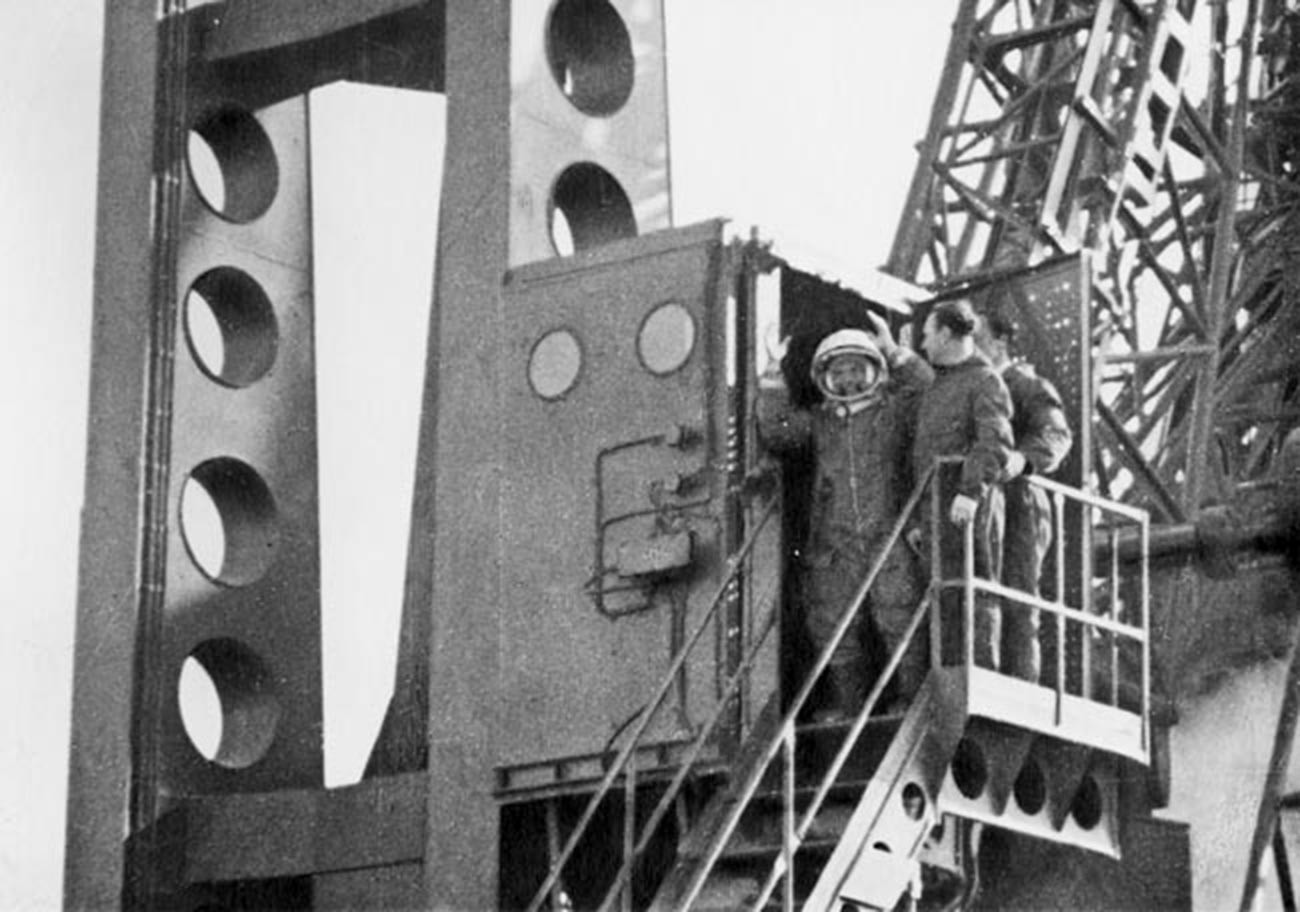
Gagarin before lift-off at Baikonur.
TASSIf using any of Russia Beyond's content, partly or in full, always provide an active hyperlink to the original material.
Subscribe
to our newsletter!
Get the week's best stories straight to your inbox